#daughter of welf
Explore tagged Tumblr posts
Text
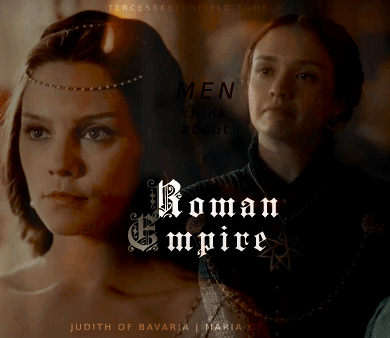
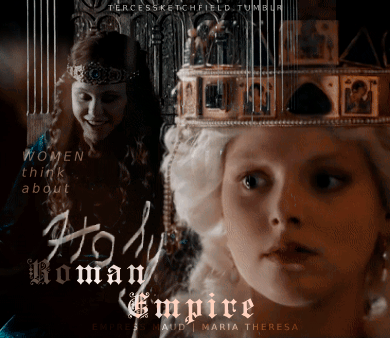
MEN THINK ABOUT ROMAN EMPIRE. WOMEN THINK ABOUT HOLY ROMAN EMPIRE
JUDITH OF BAVARIA (797-843) — Daughter of Count Welf I of Bavaria, Judith was a Carolingian Empress as the second wife of Louis I the Pious. Mother of Gisela and Charles the Bald, she foght for both her own influence at court and for the succession of her son over the claims of his elder half-brothers, the sons of Louis I from his first marriage. Charles became the Emperor in 875, after the death of Louis II, his nephew and a son of his half-brother Lothair / fancast: Annabel Scholey
MARIA OF AUSTRIA (1528-1603) — Daughter of Charles V, Holy Roman Emperor, and Isabella of Portugal. She served as Regent of Spain both jointly with her husband, Maximilian (before their accession to the imperial throne), and in person, for her father, and brother, Philip II. Her children include two Holy Roman Emperors, Rudolf II and Matthias, over whom she held great influence, and queens consorts of Spain, and France / fancast: Olivia Cooke
EMPRESS MAUD (1102-1167) — Daughter of Henry I of England and Matilda of Scotland. Her first marriage to the Holy Roman Emperor, Henry V, gave her the title under which she came down into history, and was a source of great pride to Maud. Rightful heiress of Henry I, she confronted her cousin, King Stephen, in the civil war, known as the Anarchy, fighting ferociously for her rights. She failed in this for herself but won for her son Henry, who became king and established the Plantagenet dynasty in England / cast: Alison Pill in The Pillars of the Earth (2010)
MARIA THERESA (1717-1780) — She succeded her father Charles VI as the ruler of Habsburg monarchy in 1740, and devoutedly defended it against its enemies in the War of Austrian Succession and the Seven Year's War. Wife of the Holy Roman Emperor, Francis I, she was a forceful personality and a competent ruler herself, reigning first in her own right, and later, jointly with her son Empreror Joseph II. Her children include two Holy Romam Emperors (Joseph II and Leopold II), queens consorts of Naples ans Sicily, and France / cast: Marie-Luise Stockinger in Maria Theresia (2017)
#historyedit#judith of bavaria#maria of austria#empress maud#empress matilda#maria theresa#maria theresia#perioddramaedit#history#women in history#perioddramasource#onlyperioddramas#tusereliza#userbennet#usermina#weloveperioddrama#cortegiania#perioddramagif#gifshistorical#my edit#*i have literally zero idea what is this lmao* but i really like it idk
143 notes
·
View notes
Text
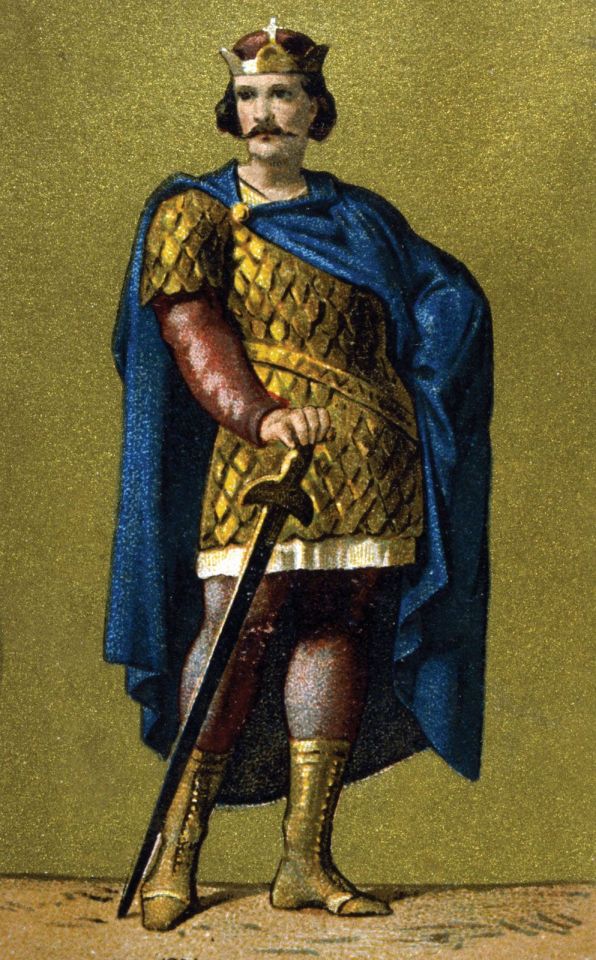
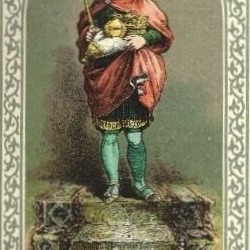
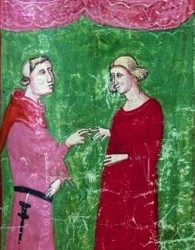


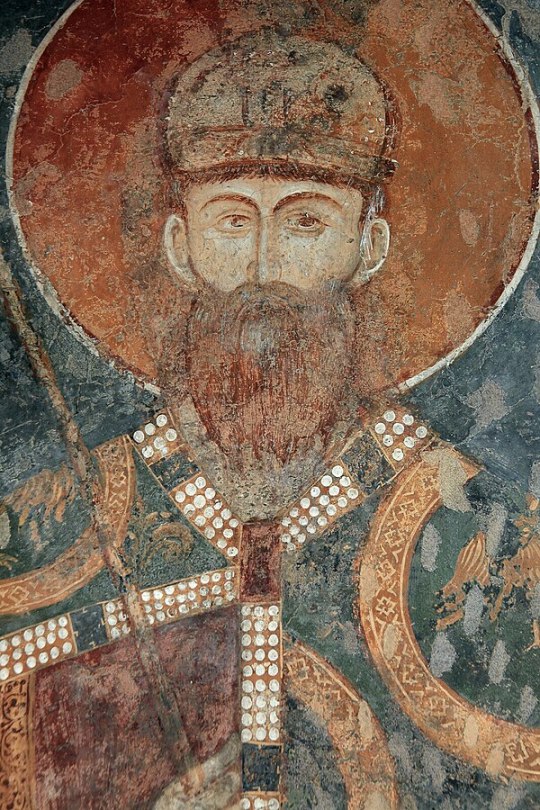
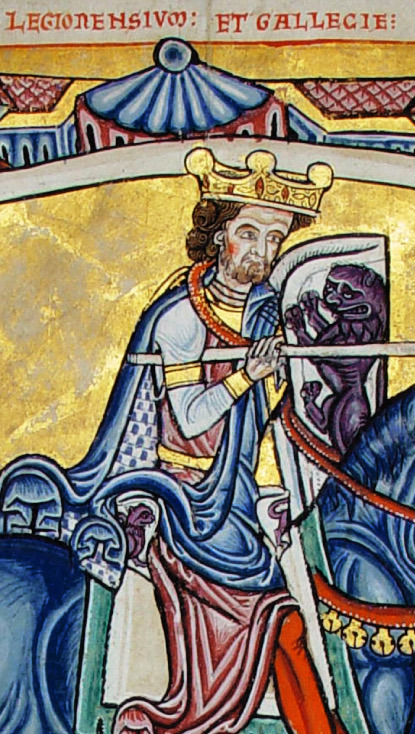
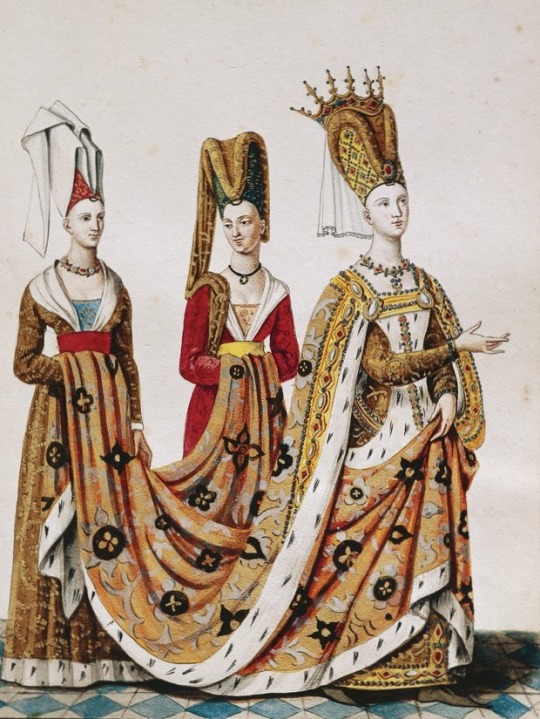
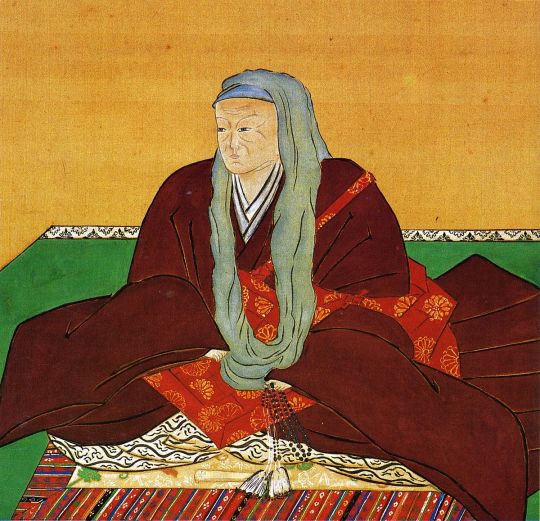
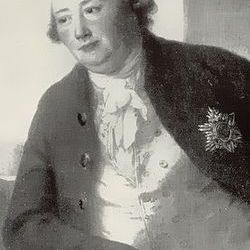
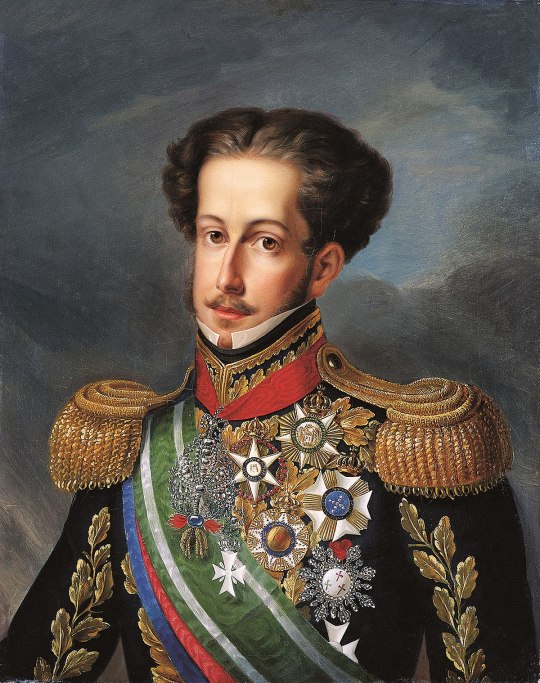

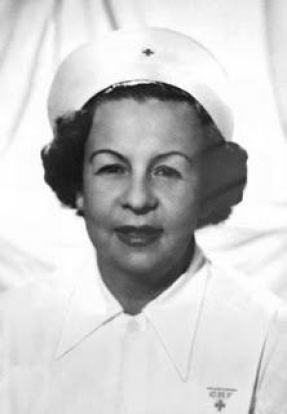
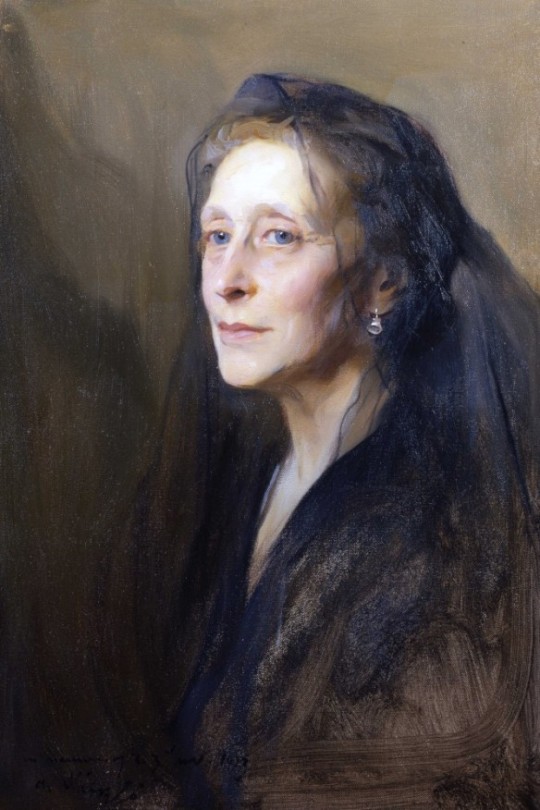
Royal Deaths, 24th September.
768 - Pippin III, the short, King of France.
911 - Louis the child, last Carolingian German King.
1120 - Welf II, Duke of Bavaria.
1143 - Agnes of Germany, daughter of Henry IV, Holy Roman Emperor.
1180 - Manuel I Komnenos, Emperor of the Byzantine Empire.
1228 - Saint Stefan Nemanjic, Grand Prince of Serbia
1230 - Alfonso IX, King of León and Galicia.
1435 - Isabeau of Bavaria, Queen and wife of Charles VI of France, who ruled during her husband's periods of insanity.
1732 - Emperor Reigen, 112th Emperor of Japan.
1812 - Friedrich Karl August, Prince of Waldeck and Pyrmont.
1834 - Pedro I, Emperor of Brazil and King of Portugal.
1860 - Marie of Württemberg, Duchess of Saxe-Coburg and Gotha, second wife and niece of Ernst I, Duke of Saxe-Coburg and Gotha.
1891 - Alexandra of Greece and Denmark, Grand Duchess Alexandra Georgievna of Russia, daughter of King George I of Greece, wife of Grand Duke Paul Alexandrovich of Russia.
1930 - Marie Juliette Louvet, mistress of Prince Louis Il of Monaco, mother of his only child Princess Charlotte of Monaco.
1950 - Princess Victoria of Hesse and by Rhine, Marchioness of Milford Haven, granddaughter of Queen Victoria.
3 notes
·
View notes
Text
SAINT OF THE DAY (December 16)
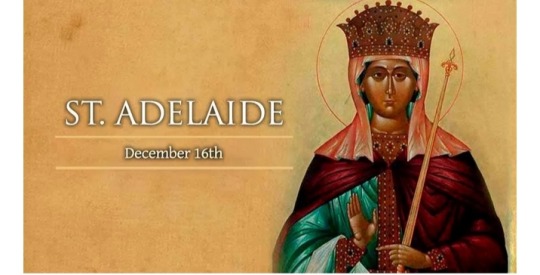
Adelaide was born in 931 in Burgundy, France, as the daughter of King Rudolph II of Burgundy, a member of the Elder House of Welf, and Bertha of Swabia.
She was promised in marriage when she was only two years old to a man named Lothaire, the son and heir of his enemy, Hugh of Provence.
Adelaide and her first husband had one daughter, Emma, born in 948 when Adelaide was only seventeen.
Lothaire was killed when still young, and Adelaide was to have a tumultuous life that paralleled the struggle for political power of the times, something she had come to symbolize. She appealed to Otho the Great of Germany for help.
Having been sought after by various kings and nobles after Lothaire’s death, she was finally married by Otho the Great of Germany, who had invaded Italy.
After Otto’s death on 7 May 973, Adelaide exercised influence over her son Otto II until their estrangement in 978, when she left the court and lived in Burgundy with her brother King Conrad.
At Conrad’s urging, she became reconciled with her son. Before his death in 983, Otto appointed her his regent in Italy.
With her daughter-in-law, Empress Theophano, she upheld the right of her three-year-old grandson, Otto III, to the German throne.
She lived in Lombardy from 985 to 991, when she returned to Germany to serve as sole regent after Theophano’s death (991).
In 991, Adelaide was invested as the Regent of the Empire. She used her power as the effective empress to increase evangelization efforts, especially in northern Europe.
She built many monasteries and churches, and also gave much aid the poor. She governed until Otto III came of age in 994.
When he became Holy Roman emperor in 996, she retired from court life, devoting herself to founding churches, monasteries and convents.
She died in 999 at the monastery of Seltz, Alsace. She was canonized in 1097 by Pope Urban II.
She is the patron saint of abuse victims, second marriages, step-parents, and widows.
Some of her relics rest in the reliquary chapel in the Basilica of the Sacred Heart on Notre Dame's campus.
3 notes
·
View notes
Photo

Matilda of Tuscany - Mighty in war
Matilda of Tuscany (c.1046-1115) was born to Beatrice of Lorraine, also a military commander in her own right, and Boniface of Tuscany. By 1052, two years after her father’s death, Matilda was her mother’s only surviving child. Beatrice remarried, but she her and new husband were kin to a prohibited degree and decided to stay chaste.
Matilda’s first experience of battle came in 1067 when she accompanied her stepfather on a military campaign. Though her exact role in the operation isn’t described, Bonizo of Sutri calls this the “first service” that she offered to the papacy, something that suggests direct participation.
Around 1069, Matilda married her stepbrother, Godfrey the Hunchback, to whom she was still related to a degree forbidden by Canon Law. Matilda had a daughter who died shortly after her birth. She separated from her husband in 1071 and never saw him again. Matilda afterward refused to take the Communion, as if she felt sinful, and the pope had to urge her to take the sacrament again. Perhaps Matilda saw her wedding as a transgression and resented her mother for the choice that led to this situation.
She began ruling in 1072 when she issued a joint charter with her mother. Beatrice died in 1076 and Matilda would become the papacy’s most stalwart defender. There was indeed a conflict at that time between Pope Gregory VII and Henry IV (then king and later Holy Roman Emperor) over the right to appoint bishops, abbots and the pope himself. This power struggle marked the beginning of the Investiture controversy. The tensions ultimately culminated in the excommunication of Henry IV and his opponents asked for the election of a new king.
Matilda actively mediated between the two. She escorted the pope as he went to meet with Henry and housed him in her fortress of Canossa. Henry crossed the Alps and stood before Canossa barefoot in the snow for three days, asking for absolution. The pope finally had to comply. This episode shows Matilda as a key diplomatic player and negotiator.
This was by no means the end of the conflict. In 1080, Henry was excommunicated again and intended to depose the pope. Matilda stood in his way. A battle took place on October 15,1080 between Henry’s Italian supporters and Matilda’s troops. Matilda was defeated.
She didn’t give up. Matilda gathered Henry’s opponents and held to her strongholds. Since he couldn’t bring her to battle, the king tried to prevent her from supplying her armies, but to no avail.
Then, Matilda managed to turn the tide. On July 2,1084, at Sorbara, her troops surprised and crushed an army of Henry’s supporters. Her biographer Donizone wrote that: “the renowned Matilda was a terror to them all”. She then busied herself with recovering her lost positions, supported Gregory’s successor, Pope Victor III and tried to establish him in Rome in 1087. At that time, she also backed a successful campaign against the Muslim trading city of Mahdia in North Africa.
Though it’s certain that Matilda was a military commander in her own right and was fully in charge, did she actively participate in the battles? According to tradition, she led her armies from the front, standing on her stirrups as she brandished her father’s sword. Some other elements could indicate her presence on the field.
First of all, there are many references to Matilda as a “soldier” or a “warrior” such as “the most prudent leader and most faithful warrior of St Peter”. Matilda was also said to be “fighting manfully”. The fact that she was called “daughter of St Peter” after her “first service” in 1067 is extremely eloquent. Indeed, this epithet was given to those who “who lent their swords to the cause of the papacy”, who fought physically for the church.
Bishop Alselm of Luca furthermore recounts that Matilda “prepared not only to sacrifice all earthly considerations for the sake of defending righteousness but also to struggle even to the shedding of her own blood to bring about your confusion and for the sake of reverence for the glory and exaltation of holy Church, until the Lord delivers His enemy into the hands of a woman”. This could indicate that Matilda was either wounded or was in danger of being wounded during the battles. Two sets of armor were sold in the marketplace of Regio 1622 and their shape was allegedly different from men’s armor. Those sets were said to have belonged to Matilda.
In 1089, Pope Urban II settled in Rome with his own troops. He arranged a marriage between Matilda and 17 years old Welf of Bavaria to secure a strategic alliance. In autumn 1091, Matilda sent 1,000 soldiers against Henry, but her troops were defeated. It’s important to note that Matilda wasn’t present during this engagement.
In 1092, Henry moved against Canossa, hoping to deal a fatal blow to Matilda. She withdrew with her forces to one of her other castles. While Henry’s army was stuck in the fog, Matilda’s troops attacked and captured his standard. She kept harassing Henry during his retreat, preventing him from regrouping or resupplying his troops.
This defeat marked the end of the support of the Italian nobles for Henry. He attempted a last military action at the siege of Nogara in 1095, but failed. The same year, Matilda escorted the pope as a went to France to preach the First crusade. The consequences of the Investiture controversy didn’t end with Henry’s defeat. Matilda was still militarily active in 1114, a year before her death, when she crushed a revolt in Mantua. When her troops approached the city with their siege engines, Mantua immediately surrendered.
Matilda’s life can be summed up by this quote by a priest who was with her in 1084: “Although she was most religious and devout in private, in the world she openly led the life of a soldier”.
Here’s the link to my Ko-Fi if you want to support me.
Bibliography:
Creber Alison, “Women at Canossa. The role of royal and aristocratic women in the reconciliation between Pope Gregory VII and Henry IV of Germany”
Eads Valerie, “Matilda of Tuscany”, in: Higham Robin, Pennington Reina (ed.), Amazons to fighter pilots, biographical dictionary of military women, vol.1
Fraser Antonia, The warrior queens
Lazzari Tiziana, “Matilda of Tuscany: New Perspectives about Her Family Ties”
Nash Penelope, Empress Adelheid and Countess Matilda: Medieval Female Rulership and the Foundations of European Society
#historyedit#matilda of tuscany#11th century#history#women in history#italy#italian history#warrior women#women warriors#women in armor#middle ages#medieval history#medieval women#war#military history#historyblr#badass women#feminism#women's history month#aesthetic#mooboard#history moodboard
286 notes
·
View notes
Text
This Week in BL
June 2021 Wk 1
Being a highly subjective assessment of one tiny corner of the interwebs.

Ongoing Series - Thai
Y-Destiny Ep 10 - love me some players! What can I say, players mock tropes by their nature, it’s refreshing. We see the glorification of purity a lot in BL, a bit of gay messiness never hurt nobody. Wait, no, that’s not true. It always hurts the characters, because... DRAMA! Anyway this was definitely my favorite installment in the series.
Fish Upon The Sky Ep 9 - oh Fish what am I gonna do with you? *Throws hands up into the air, with the fishes. * It could have been worse, I suppose?
Top Secret Together Ep 4 - still cute, no subs as yet so I only sorta know what happened. No gay advice dads, but my two favorite couples dominated, and there was domesticity so I can tell you it was definitely CUTE.
Nitiman Ep 5 - I love the true uni rep with homework, papers due, and drunken room parties. I also like how Jin is honest about being confused, acting on that confusion by trying to flirt and determine what he likes. Everyone around them knows Bbomb is likely to get his heart broken but different friends are reacting differently to that situation. Honestly, Jin is basically a rake disaster bi, and it’s working for me. Theres a lot more honest bisexual confusion going on with this love triangle than the usual cribbed in faen fatale rigamarole. (This is when I warn you that I happen to enjoy Love Mechanics and Love Sick BECAUSE they are messy disaster queers.)

Ongoing Series - Not Thai
Love is Science? (Taiwan) Ep 11 (BL subplot) - DELAYED
Be Loved in House: I Do (Taiwan) Ep 4 - I’m not entirely sure what’s going on. I think it’s linguistic, Viki’s subs feel very off to me. However, the script is starting to soften the main couple, and I like that. They’re laying in depth with backstory and romantic tension. So I’m enjoying it, but I can tell it’s unlikely to be a favorite.
My Lascivious Boss (Vietnam) Ep 9 - in one of those Vietnamese whiplash moments we got the secret identity reveal, the faen fatale relinquishing her claim, and a bisexual identity crisis one & done. Plus a bunch of tropes. Meanwhile, seme continues to be a total lush. Feel ya, babe. Next week looks to be a doozie. Could be the final episode, but who knows? Pacing? What pacing? Still this series is loads of fun and crazy queer. (Vietnamese whiplash is my new kink, okay?)

Gossip
Thai BL bodyguard romance Golden Blood dropped some more content, so fingers crossed it’s still happening.
Workshopping photos from Bad Buddy dropped, so GMMTV is definitely filming it soon. I don’t think it’s soon enough for this to pick up Fish’s time slot, but I’ve been wrong about Thai scheduling before.

Breaking News
Hey Rival, I LOVE YOU! is one of my personal favorites from Vietnam (just a 30 min microfilm but very cute) and it got a second (longer) season! It’s called My Monster in Law AKA Mother Welf AKA Me Chon Dau Cao, and it picks up 3 years after HRILY, with the characters married with an adopted daughter. It's basically just adorable domesticity featuring the trials of work, friends, child rearing, and in-laws. I love the domestic look on you, Vietnam, very cute. Here’s watch order + links for ya (more to come I think so I’ll put it into the weekly rotation).
Hey Rival, I LOVE YOU!
Mẹ Chồn Dâu Cáo Tập 1+2 I Phim Boy's Love Đam Mỹ Tâm Lý Tình Cảm Hay 2021 IBest Gay Short Film
My Monster In Law 2 I Episode 3 I Best gay short film / Gay Drama / Boy's Love Movie I Gay Best Kiss
Mẹ Chồn Dâu Cáo Tập 4 IPhim Boy's Love Đam Mỹ Tâm Lý Hay 2021 IBest Gay Short Film IGay Movie
His (the original Japanese teen series) is now available on Viki. This is the (ostensible) prequel to His the movie (different cast). They don’t feel all that related to me. On Viki it’s under: His - I didn’t Think I Would Fall in Love. It’s more Japanese cinema than it is live action yaoi: beautiful, atmospheric, slow, floaty, and with an amorphous ending. I’ve talked about the nuances of Japanese BL enough now for you to get what you’re in for. There’s a moment where Shun and his dad quietly eat passion fruit together that was about as thrilling as it gets. So, ya know, watch at your own risk, don’t expect anything Thai-ish and you’ll be fine. Okay? Okay.
Speaking of Viki, I watched Emily’s 5 Things. It’s het but it features everyone’s favorite piner Sam Lin (We Best Love) pining the pine to end all pines (after a girl this time), friend-zoned since high school by the great love of his life. (It’s mutual pining, of course, they’re both just stupid.) It’s very emotional and drama lama but also cute and silly so I enjoyed it. And ya know, I just wanna support Taiwan. No queer rep tho.
Lovely Writer special EP coming June 9th. Thailand is trying to spoil us, so why do I feel like this is too much pf a good thing?
Strongberry, Korean queer film studio, has a new microfilm coming out called Fingers. I’m a fan of their work, so I’m excited.
Speaking of Korea, announced on Instagram, Hwang Da Seul (Where Your Eyes Linger & To My Star) is bringing out a new BL in July! I love her consistently bright style and casting choices (even if I’m not wild about her pacing). It’s based on the webtoon Something is Wrong With Popularity (not sure if it will have the same title, no MDL listing yet). 10 episodes 10-12 min ea. Thank you Korean Wave. Definitely NOT too much of a good thing.

Next Week Looks Like This:
Some shows may be listed later than actual air date for International accessibility reasons.

Upcoming 2021 BL master post here.
Links to watch are provided when possible, ask in a comment if I missed something.
#thai bl#asian bl#thaibl#asianbl#Top Secret Together#Y-Destiny#Fish Upon The Sky#Nitiman#Taiwanese bl#Be Loved in House: I Do#Vietnamese BL#My Lascivious Boss#Hey Rival I LOVE YOU!#Me Chon Dau Cao#his#japanese bl#golden blood#Something is Wrong With Popularity#korean bl#new bl#upcoming bl#his the series#his the movie
104 notes
·
View notes
Photo

Princess Sophie of Greece and Denmark (26 June 1914 – 24 November 2001) was by birth a Greek and Danish princess as well as Princess of Hesse-Kassel and Princess of Hanover through her successive marriages to Prince Christoph of Hesse and Prince George William of Hanover. A sister-in-law of Queen Elizabeth II of the United Kingdom, she was for a time linked to the Nazi regime.
The fourth of five children of Prince Andrew of Greece and Denmark and Princess Alice of Battenberg, Sophie spent a happy childhood. Her early years, however, were affected by the First World War (1914–1918) and the Greco-Turkish War (1919–1922). For the young princess and her relatives, these conflicts had dramatic consequences and led to their exile in Switzerland (between 1917 and 1920), and then in France (from 1922 to 1936). During their exile, Sophie and her family depended on the generosity of their foreign relatives, in particular Marie Bonaparte (who offered them accommodation in Saint-Cloud) and Lady Louis Mountbatten (who supported them financially).
At the end of the 1920s, Sohpie fell in love with one of her distant cousins, Prince Christoph of Hesse. Around the same time, her mother was struck by a mental health crisis which led to her confinement in a Swiss psychiatric hospital between 1930 and 1933. Married in December 1930, Sophie moved to Berlin with her husband. She then gave birth to five children: Christina (1933–2011), Dorothea (1934–2002), Karl (born 1937), Rainer (born 1939) and Clarissa of Hesse (born 1944).
Close to the Nazi circles, in which her husband and several of her in-laws were involved from 1930, Sophie joined the National Socialist Women's League in 1938. Deceived by Adolf Hitler, whom she saw as a modest and charming man, the princess got close to Emmy Sonnemann, who became her friend and later married Luftwaffe Commander-in-Chief Hermann Göring in April 1935. Attached to Nazism, Sophie and her in-laws therefore served as unofficial intermediaries between the Nazi regime and the European dynasties to which they were related. Under these conditions, the social status of Christoph and Sophie continued to improve and they moved into a large house located in Dahlem, in 1936. The outbreak of the Second World War, however, forced the couple to separate. An SS officer since 1932, Christoph joined the Luftwaffe, which led him to various European theaters of operation. For her part, Sophie moved with her children to her mother-in-law at Friedrichshof Castle in Kronberg im Taunus.
The Führer's growing distrust of the German aristocracy (from 1942) and the betrayal of King Victor Emmanuel III of Italy (in 1943) led the Nazi regime to turn against the House of Hesse-Kassel. Princess Mafalda, daughter of the Italian monarch and sister-in-law of Sophie, was thus imprisoned in Buchenwald, where she was seriously wounded and died shortly after, while her husband, Philipp, Landgrave of Hesse, was confined in Flossenbürg until the victory of the Allies. At the same time, Christoph was found dead in mysterious circumstances, leaving Sophie almost alone with her four children and a fifth one under way as well as the children of Philipp and Mafalda. The tragic events made Sophie realize the true nature of Hitler's regime and turn against Nazism.
The defeat of Germany and its occupation by the Allies brought new difficulties in the life of Sophie, who found herself in a precarious financial situation due to the theft of her jewelry by American soldiers in 1946 and the sequestration of the property of her first husband until 1953. After living for several months in Wolfsgarten, she started a relationship with another one of her cousins, Prince George William of Hanover, whom she married in 1946. She had three more children by her second husband: Welf Ernst (1947–1981), Georg (born 1949) and Friederike of Hanover (born 1954). The couple then moved to Salem, where George William worked as director of Schule Schloss Salem (1948–1959), before settling in Schliersee (from 1959).
Excluded from the 1947 wedding of her brother Prince Philip to Princess Elizabeth of the United Kingdom (later Queen Elizabeth II) because of her past links to the Nazi regime, Sophie was reintegrated into the royal circles in the early 1950s and attended major events of the aristocracy afterwards. She nevertheless led a discreet and withdrawn life, spending her time through reading, listening to music and gardening. The last of the Duke of Edinburgh's sisters to die, she died in a retirement home in Schliersee in 2001, after losing one of her sons in 1981 and a grandson in 1994.
#Sophie of Greece and Denmark#House Glucksburg#XX century#XXI century#people#portrait#photo#photography#Black and White
35 notes
·
View notes
Photo










House of Hohenzollern & Welf: Princess Elisabeth of Brandenburg
Elisabeth was born as the third child and second daughter to Elector Joachim I Nestor of Brandenburg and his wife Princess Elisabeth of Denmark, Norway and Sweden. Her siblings were Elector Joachim II Hektor of Brandenburg, Duchess Anna of Mecklenburg-Güstrow. Margrave of Brunswick-Küstrin and Margareta who was Duchess of Pomerania by her first marriage and Princess of Anhalt-Zerbst by her second one.
Elisabeth was educated in a humanist but also strictly religious fashion and had come into contact with Protestantism when her mother celebrated a mass in the protestant fashion. Elisabeth’s father was enraged that his wife might convert to the Protestant faith which got to no one less than Martin Luther himself who spoke in favour of the Electress. Some scholars think this might have impressed the young Elisabeth.
At the age of 14, Elisabeth was married to Erich I of Brunswick-Calenberg-Göttingen who was already 54 at the time. They mostly lived apart but did provide heirs for the duchy. In 1528 Elisabeth was pregnant again and there were complications. The young duchess blamed her husband’s mistress of witchcraft and demanded she shall be burned. Despite Elisabeth’s best efforts to capture the mistress she escaped. Only by the promise of a greater dower than had been promised to her in her marriage contract, Erich was able to calm his wife down. In the end, the birth of the heir Erich II went down as smoothly as it could for the time. The marriage resulted in a total of four children. Next to Erich, there were his older sister Countess Elisabeth of Henneberg and his two younger sisters Duchess Anna Maria of Prussia and High Burgravine Katharina of Bohemia.
Elisabeth met Martin Luther in 1534 when she visited her mother. Four years later a regular letter exchange began and she sent him chesse and wine regularly. He thanked her by sending mulberries, fig tree seedlings and his translation of the bible into German with a dedication to her. Elisabeth officially converted to Protestantism on April 7th, 1538. She informed Landgrave Philip I of Hesse, the husband of Christina of Saxony, in October about her conversion. Philip who was a champion of the reformation helped her to bring reformator Antonius Corvinus to her court in Münden. Elisabeth’s husband tolerated his wife’s conversion. While it was against his political alignment with the catholic Emperor, he admired the reformators boldness.
Erich died in 1540. Elisabeth, who found an ally in Elector Johann Friedrich of Saxony, a distant cousin of Christina of Saxony (they shared a great-grandfather), was able to cease the regency together with Philip of Hesse for her son. Heinrich of Brunswick-Wolfenbüttel, her late husband’s nephew, protested without success. Elisabeth’s regency lasted for five years in which is implemented the reformation in the principality. During this time, she wrote a book for a son in which she gave him guidance on how to rule in the future.
Elisabeth’s son Erich had originally been promised to Princess Anna of Hesse since they were children. But Erich fell in love with the protestant Princess Sidonie of Saxony, the sister of the future Electors Maurice and Augustus of Saxony. A year later, Elisabeth agreed to anull the engagement to Anna and allow her son to marry Sidonie, who was ten years his senior. The same year, Erich’s rule began and Elisabeth’s regency ended.
In 1546, Elisabeth married Count Poppo XII of Henneberg who was her son-in-law’s younger brother. In the following years, Elisabeth’s son turned his favor away from Protestantism and towards Catholicism again what worried her. The last ten years of her life were dominated by her fight for Protestantism. She succeeded in marrying her daughter Anna Maria to the 40 years older but protestant Duke Albrecht of Prussia. But her son married his youngest sister Katharina to the catholic Wilhelm of Rosenberg, High Burgrave of Bohemia. He gave his mother the wrong date so she arrived to late. Later Elisabeth got to know that Katharina was allowed to keep her faith and to bring a protestant priest with her. After the Battle of Sievershausen four years earlier, Heinrich of Brunswick-Wolfenbüttel had chased Elisabeth out of Münden to Hanover. In the end, she settled in her husband’s county and wrote one last book. This time it was for widows to help them deal with their grief.
Elisabeth died on May 25th, 1558, in Illmenau. It is said that she died of a broken heart. Her children honored her by ordering an epitaph to be created which was erected in 1566 in the St. Giles Chapel of the St. John's Church in Schleusingen.
// Emma Hamilton in The Tudors (2007-10)
#historyedit#German history#Reformation#1500s#women in history#historic women#European history#16th century#Women of the Reformation#House of Welf#House of Hohenzollern#Elisabeth of Brandenburg#Duchess Elisabeth of Brunswick-Calenberg-Göttingen
83 notes
·
View notes
Text
Queen Victoria’s Descendants (LIVING DESCENDANTS ONLY)
If you see any mistakes or can offer info on something like “Child 1” or an unknown birth or death year, please let me know. The only non-living descendants I kept on this list were her children
Key
Bold names=Queen Victoria’s children
* Descendants are already listed elsewhere on this list or the ones who would follow said person Examples: Mark Nicholas van Eyck should be followed by Princess Dorothea of Hesse but she and her descendants are also descended elsewhere. Another examples are Queen Elizabeth II & The Duke of Edinburgh’s descendants and the descendants of Princess Sibylla of Saxe-Coburg und Gotha and Prince Gustaf Adolf, Duke of Västerbotten
** I’ve seen reports that she died in 2002, but no obituary. Any ideas?
Bold and Italics together on one name denotes this person is presently the eldest and longest lived person of Queen Victoria (The Duke of Edinburgh)
The Princess Victoria, Princess Royal, German Empress (1840-1901)
Friederike Thyra Marion Wilhelmine Dorothea von der Osten(1959)
Felicitas Catharini Malina Johanna von Reiche von Heinz (1986)
Victoria Cecilie Alexandra Josephine von Reiche (1989)
Donata Friederike Diana Sophie von Reiche (1992)
Hubertus Christoph Joachim Friedrich von der Osten (1964)
Cecilie Felicitas Katherina Sophie von der Osten (1967)
Julius Marxen (1998)
Victor Marxen ( 2002)
Diana Renata Friederike von Nostitz-Wallwitz (1974)
Child 1
Child 2 (2011)
Princess Christa Friederike Alexandrine Viktoria of Prussia (1936)
Philip Kirill Prinz von Preußen (1968)
Paul Wilhelm von Preußen (1995)
Maria Luise von Preußen (1997)
Elisabeth Christine von Preußen (1998)
Anna Sophie von Preußen (2001)
Johanna Amalie von Preußen (2002)
Timotheus Friedrich von Preußen (2005)
Friedrich Wilhelm Prinz von Preußen (1979)
Friedrich Wilhelm von Preußen (2012)
Charlotte von Preußen (born 201?)
Princess Viktoria-Luise von Preußen, Hereditary Princess of Leiningen (1982)
Princess Alexandra Ehrengard Viktoria Luise of Leiningen (2020)
Joachim Albrecht von Preußen (1984)
Georgina von Preußen (2018)
Prince Michael of Prussia (1940-2014)
Michaela Prinzessin von Preußen (1967)
Child 1
Child 2
Nataly Prinzessin von Preußen (1970)
Princess Marie Cécile of Prussia (1942)
Kira-Marina Liepsner (1977)
Luise von Bismarck (unknown)
Sophie von Bismarck (unknown)
Georg Friedrich, Prince of Prussia (1976)
Prince Carl Friedrich Franz Alexander of Prussia (2013)
Prince Louis Ferdinand Christian Albrecht of Prussia (2013)
Princess Emma Marie Charlotte Sophie of Prussia (2015)
Prince Heinrich Albert Johann George of Prussia (2016)
Princess Cornelie-Cecile of Prussia (1978)
Prince Christian-Sigismund of Prussia ( 1946)
Isabelle-Alexandra Prinzessin von Preußen (1969)
Prince Christian Ludwig of Prussia (1986)
Princess Irina of Prussia (1988)
Patrick Edvard Christian Lithander(1973)
Pius Lithander ( 2005)
Hugo Lithander (2006)
Karl Lithander (2008)
Merle Lithander (2010)
Wilhelm Sebastian Lithander (1974)
Steen Lithander (2010)
Ebba Lithander (2012)
Princess Anastasia Victoria Cecilia Hermine of Prussia (1944)
Princess Augustina of Löwenstein-Wertheim-Rosenberg (1999)
Hereditary Prince Nicodemus of Löwenstein-Wertheim-Rosenberg (2001)
Prince Laurentius of Löwenstein-Wertheim-Rosenberg (2006)
Princess Kiliane Olympia of Löwenstein-Wertheim-Rosenberg (2008)
Prince Hubertus of Löwenstein-Wertheim-Rosenberg (1968)
Prince Dominik Wilhelm of Löwenstein-Wertheim-Rosenberg (2001)
Prince Frederick Nicholas of Prussia (1946)
Beatrice von Preussen (1981)
Florence von Preussen (1983)
Sylvie Beatrice Selina Tollemache (2016)
Augusta von Preussen (1986)
Frederick (Fritz) Stormont von Preussen (1990)
Prince Andreas of Prussia ( 1947)
Tatiana von Preussen (1980)
Arthur Frederick Richard Womack von Preussen (2015)
Frederick Alexander von Preussen (1984)
Princess Victoria Marina of Prussia (1952)
George Jean Achache (1980)
Francis Maximilian Frederick Achache (1982)
Prince Rupert of Prussia (1955)
Brigid von Preussen (1983)
Astrid von Preussen (1985)
Princess Antonia of Prussia, The Duchess of Wellington (1955)
Arthur Wellesley, Earl of Mornington (1978)
Lady Mae Madeleine Wellesley (2010)
Arthur Darcy Wellesley, Viscount Wellesley (2010)
The Hon Alfred Wellesley (2014)
Lady Honor Wellesley (1979)
Walter Montagu (2005)
Nancy Jemima Montagu (2007)
Lady Mary Wellesley (1986)
Lady Charlotte Santo Domingo (1989)
Child 1 (2017)
Child 2 (2019)
Lord Frederick Wellesley (1992)
Kira Alexandrine Harris (1954)
Philip Louis Johnson (1985)
William John Engel (1983)
Dohna Maria Patterson (1954)
Princess Marie Louise Marina Franziska of Prussia (1945)
Countess Sophie Anastasia of Schönburg-Glauchau (1979)
Rudi Federico Nicolas Alacreu y Schönburg-Glauchau (2017)
Carlota Alacreu y Schönburg-Glauchau (2019)
Count Friedrich Wilhelm of Schönburg-Glauchau (1985)
Prince Adalbert Alexander Friedrich Joachim Christian (1948)
Prince Alexander of Prussia (1984)
Prince Christian of Prussia (1986)
Prince Philipp of Prussia (1986)
Princess Stephanie Viktoria-Luise of Prussia (1966)
Aaron Emanuel Bao (1994)
Shoshana Twahia Sophie Bao (1996)
Amir Joel Tumaini Bao (1998)
Seraphine Bao (2002)
Princess Viktoria-Benigna von Courland (1939)
Nikolaus Maximilian Ludwig Karl Ernst-Johann Maria, Baron von Twickel
Constantin Philipp Ludwig Friedrich von Twickel
Benedikta Elisabeth Ann Lucia von Twickel
Georg von Twickel (unknown)
Kirryl von Twickel (unknown)
Tassilo Heinrich Alexander, Baron von Twickel (unknown)
Antonius von Twickel (unknown)
Matilda Valentina Helga Benigna von Twickel (unknown)
Ernst-Johann, Prince Biron von Courland (1940)
Prince Michael Karl August Wilhelm Biron von Courland (1944)
Princess Veronika Biron von Courland (1970)
Prince Alexander Biron von Courland (1972)
Princess Stephanie Biron von Courland (1975)
Princess Donata-Viktoria of Prussia (1952)
Prince Wilhelm-Karl of Prussia (1955)
Prince Oscar of Prussia (1959)
Prince Oskar of Prussia (1993)
Princess Wilhelmine of Prussia (1995)
Prince Albert of Prussia (1998)
Prince Franz Wilhelm Victor Christoph Stephan of Prussia (1943)
Grand Duke George Mikhailovich of Russia (1981)
Prince Franz Friedrich Christian of Prussia (1944).
Alexandra Maria Prinzessin von Preussen (1960)
Désirée Anastasia Prinzessin von Preussen (1961)
Princess Marie of Hanover, Countess von Hochberg (1952)
Count Conrad von Hochburg (1985)
Count Georg von Hochburg (1987)
Prince Ernst August of Hanover (1954)
Hereditary Prince Ernest-August of Hanover(1983)
Princess Elisabeth Tatiana Maximiliana Iacobella Faiza of Hanover (2018)
Prince Welf August Johannes of Hanover (2019)
Prince Christian Heinrich of Hanover (1985)
Prince Nicolas of Hanover (2020)
Princess Sofia of Hanover (2020)
Princess Alexandra Charlotte Ulrike Marym Virginia of Hanover (1999)
Prince Otto Heinrich of Hanover (1988)
Princess Olga Sophie of Hanover (1958)
Princess Alexandra Irene of Hanover, Princess of Leiningen (1959)
Ferdinand, Hereditary Prince of Leiningen (1982)***
Princess Olga of Leiningen (1984)
Prince Hermann of Leiningen (1987)
Prince Leopold Konstantin Rainer Andreas of Leiningen (2019)
Prince Heinrich of Hanover (1961)
Prince Albert Thilo Ludwig Arndt of Hanover (1999)
Princess Eugenia of Hanover (2001)
Prince Julius of Hanover (2006)
Prince George William of Hanover (1915-2006)
Princess Saskia of Hanover (1970)
Son 1
Son 2
Son 3
Prince Georg of Hanover (1949)
Princess Vera of Hanover (1976)
Daughter 1
Daughter 2
Princess Nora of Hanover (1979)
Son 1
Son 2
Princess Friederike of Hanover (1954)
Julia Emma Cyr (1982)
Jean-Paul Welf Cyr (1985)
Queen Sofia of Spain (1938)
Infanta Elena of Spain, The Duchess of Lugo (1963)
Don Felipe Juan Froilán de Marichalar y de Borbón (1998)
Doña Victoria Federica de Marichalar y de Borbón (2000)
The Infanta Cristina of Spain (1965)
Don Juan Valentín de Urdangarin y de Borbón (1999)
Don Pablo Nicolás Sebastián de Urdangarin y de Borbón (2000)
Don Miguel de Urdangarin y de Borbón (2002),
Doña Irene de Urdangarin y de Borbón (2005)
King Felipe VI of Spain (1968)
Leonor, The Princess of Asturias (2005)
The Infanta Sofia of Spain (2007)
King Constantine II of The Hellenes (1940)
Princess Alexia of Greece & Denmark (1965)
Arrietta Morales y de Grecia (2002)
Ana María Morales y de Grecia (2003)
Carlos Morales y de Grecia (2005)
Amelia Morales y de Grecia (2007)
Crown Prince Pavlos of Greece, Prince of Denmark (1967)
Princess Maria-Olympia of Greece & Denmark (1996)
Prince Constantine-Alexios of Greece & Denmark(1998)
Prince Achileas-Andreas of Greece & Denmark (2000)
Prince Odysseus-Kimon of Greece & Denmark (2004)
Prince Aristidis-Stavros of Greece & Denmark(2008)
Prince Nikolaos of Greece & Denmark (1969)
Princess Theodora of Greece & Denmark (1983)
Prince Philippos of Grecce & Denmark (1986)
Princess Irene of Greece & Denmark (1942)
Princess Caroline-Luise Mireille Irene Sophie of Hanover (1965)
Princess Mireille Viktoria Luise of Hanover (1971)
Duchess Donata of Mecklenburg (1956)
Thyra von Solodkoff (1989)
Alix von Solodkoff (1992)
Niklot von Solodkoff (1994)
Duchess Edwina of Mecklenburg (1960)
Ludwig von Posern (1996)
Paul von Posern (1997)
Ferdinand von Posern (1999)
Crown Princess Margareta, Custodian of the Royal Crown of Romania (1949)
Princess Elena of Romania (1950)
Nicholas de Roumanie Medforth-Mills (1985)
Iris Anna Cîrjan (2016)
Maria-Alexandra de Roumanie Medforth-Mills (2020)
Elisabeta-Karina de Romanie Medforth-Mills (1989)
Princess Sofia of Romania (1957)
Elisabeta-Maria Biarneix (1999)
Irina Walker (1953)
Michael Torsten Kreuger de Roumanie (1984)
Kohen Kreuger de Roumanie (2012)
Angelia Margareta Kreuger de Roumanie (1986)
Courtney Bianca Kreuger de Roumanie Knight (2007)
Diana Knight Kreuger de Roumanie (2011)
Princess Maria of Romania (1964)
Prince Amedeo Umberto of Savoy-Aosta (1943)
Princess Bianca of Savoy-Aosta (1966)
Viola Arrivabene-Valenti-Gonzaga (1991)
Vera Arrivabene-Valenti-Gonzaga (1993)
Mafalda Arrivabene-Valenti-Gonzaga (1997)
Maddalena Arrivabene-Valenti-Gonzaga (2000)
Leonardo Arrivabene-Valenti-Gonzaga (2001)
Prince Aimone of Savoy-Aosta, Duke of Aosta (1967)
Prince Umberto of Savoy-Aosta, Prince of Piedmont(2009)
Prince Amedeo Michele of Savoy-Aosta, The Duke of the Abruzzi (2011)
Princess Isabella Vita Marina of Savoy-Aosta (2012)
Princess Mafalda of Savoy-Aosta (1969)
Nob. Anna Lombardo di San Chirico (2002)
Nob. Carlo Lombardo di San Chirico (2003)
Nob. Elena Lombardo di San Chirico (2004)
Ginevra Maria Gabriella van Ellinkhuizen (2006)
Sophie Eila Brandram- Voelcker (1981)
Maximillian Walter Voelcker (2018)
Alexander Paul Voelcker (2019)
Nicholas George Brandram (1982)
Alexia Katherine Brandram-Hicks (1985)
Theodora Katherine Anne Hicks (2019)
Princess Mafalda of Hesse (1965)
Tatiana Galdo (1992)
Polissena Galdo (1993)
Count Cosmo Brachetti Peretti (2000)
Count Briano Brachetti Peretti (2002)
Donatus, Prince and Landgrave of Hesse (1966)
Princess Paulina of Hesse (2007)
Hereditary Prince Moritz of Hesse (2007)
Prince August of Hesse (2012)
Princess Elena Elisabeth Madeleine of Hesse (1967)
Madeleine Immacolata Tatiana Theresa Caiazzo (1999)
Prince Philip Robin of Hesse (1970)
Princess Elena Margherita Lotti Christiane Elisabeth of Hesse (2006)
Prince Tito of Hesse (2008)
Princess Mafalda of Hesse (2014)
Princess Maria Tatiana ("Tania") of Yugoslavia (1957)
Sonja Thune-Larsen (1992)
Olga Thune-Larsen (1995)
Helen Sophia van Eyck (1963)
Sascha Alexandra Sophia Harman (1986)
Pascale Olivia Harman (1989)
Mark Nicholas van Eyck (1966)
Princess Dorothea Charlotte Karin of Hesse (1934-2002?)**
Princess Marina Margarita of Windisch-Grätz (1960)
Réka Dorothea Sita Jakabffy (1988)
Sophia Magdolna Jakabffy (1989)
Princess Clarissa Elisabeth Fiore of Windisch-Grätz (1966)
Michel Jean Henri de Waele (1986)
Raphaël de Waele (2013)
Lucy de Waele (2015)
Mathieu Paul Philippe de Waele (1988)
Lizzie de Waele (2020)
Rubi Jade de Waele (1994)
Prince Karl Adolf Andreas of Hesse (1937)
Prince Christoph of Hesse (1969)
Princess Irina of Hesse (1971)
Valentin Polycarp von Schönburg-Glauchau (2005)
Prince Rainer Christoph Friedrich of Hesse (1939)
Princess Clarissa Alice of Hesse (1944)
Johanna von Hesse (1980)
The Prince Albert Edward, AKA Edward VII (1841-1910)
The Princess Elizabeth Alexandra Mary AKA Queen Elizabeth II (1926)*
David Albert Charles Armstrong-Jones, 2nd Earl of Snowdon (1961)
Charles Patrick Inigo Armstrong-Jones, Viscount Linley (1999)
Lady Margarita Elizabeth Rose Alleyne Armstrong-Jones (2002)
The Lady Sarah Frances Elizabeth Chatto (1964)
Samuel David Benedict Chatto (1996)
Arthur Robert Nathaniel Chatto (1999)
David Henry George Lascelles , The 8th Earl of Harewood (1950)
Lady Emily Tsering Shard (1975)
Issac Shand (2009)
Ida Shand (2009)
Otis Shand (2011)
The Hon. Benjamin George Lascelles (1978)
Mateo Lacelles (2013)
Alexander Edgar Lascelles, Viscount Lascelles (1980)
Leo Cyrus Anthony Lascelles (2008)
The Hon Ivy Lascelles (2018)
The Hon. Edward David Lascelles (1982)
The Honourable James Lascelles (1953)
Sophie Amber Lascelles- Pearce (1973)
Lilianda Pearce (2010)
Tanit Lascelles (1981)
Tewa Ziyane Robert George Lascelles (1985)
Son 1 (2014)
The Hon. Mark Hubert Lascelles (1964)
Charlotte Patricia Lascelles (1996)
Imogen Mary Lascelles (1998)
Miranda Rose Lascelles (2000)
Gerald David Lascelles (1924-1998)
Henry Ulick Lascelles (1953)
Maximilian John Gerald Lascelles (1991)
Martin David Lascelles (1962)
Georgina Elizabeth Douet-Lascelles (1988)
Alexander Joshua Lascelles (2002)
Prince Richard Alexander Walter George, The Duke of Gloucester (1944)
Alexander Patrick Gregers Richard Windsor, The Earl of Ulster (1974)
Xan Richard Anders Windsor, Lord Culloden (2007)
Lady Cosima Rose Alexandra Windsor (2010)
Lady Davina Elizabeth Alice Benedikte Windsor (1977)
Senna Kowhai Lewis (2010)
Tane Mahuta Lewis (2012)
Lady Rose Gilman (1980)
Lyla Beatrix Christabel Gilman (2010)
Rufus Gilman (2012)
Prince Edward, The Duke of Kent (1935)
George Windsor, The Earl of St. Andrews (1962)
Edward, Lord Downpatrick (1988)
Lady Marina-Charlotte Windsor (1992)
Lady Amelia Windsor (1995)
Lady Helen Marina Lucy Taylor (1964)
Columbus George Donald Taylor (1994)
Cassius Edward Taylor (1996)
Eloise Olivia Katherine Taylor (2003)
Estella Olga Elizabeth Taylor (2004)
Lord Nicholas Charles Edward Jonathan Windsor (1970)
Albert Louis Philip Edward Windsor (2007)
Leopold Ernest Augustus Guelph Windsor (2009)
Louis Arthur Nicholas Felix Windsor (2014)
Lord Patrick Windsor (1977-1977)
Princess Alexandra Helen Elizabeth Olga Christabel of Kent, The Hon. Lady Ogilvy (1936)
James Robert Bruce Ogilvy (1964)
Flora Alexandra Ogilvy (1994)
Alexander Charles Ogilvy (1996)
Marina Victoria Alexandra Ogilvy (1966)
Zenouska May Mowatt (1990)
Christian Alexander Mowatt (1993)
Prince Michael George Charles Franklin of Kent (1942)
Lord Frederick Michael George David Louis Windsor (1979)
Maud Elizabeth Daphne Marina Windsor (2013)
Isabella Alexandra May Windsor (2016)
Lady Gabriella Marina Alexandra Ophelia Kingston (1981)
The Lady Alexandra Clare Carnegie (1959)
Amelia Mary Etherington (2001)
David Carnegie, 4th Duke of Fife (1961)
Charles Duff Carnegie, Earl of Southesk (1989)
Lord George William Carnegie (1991)
Lord Hugh Alexander Carnegie (1993)
Haakon Lorentzen (1954)
Olav Alexander Lorentzen (1985)
Christian Frederik Lorentzen (1988)
Sophia Lorentzen (1994)
Ingeborg Lorentzen (1957)
Victoria Ragna Lorentzen Ribeiro (1988)
Frederik Sven Lorentzen Falcão (2016)
Ragnhild Alexandra Lorentzen (1968)
Alexandra Joyce Lorentzen Long (2007)
Elizabeth Patricia Lorentzen Long (2011)
Princess Astrid Maud Ingeborg, Mrs. Ferner (1932)
Cathrine Ferner-Johansen (1962)
Sebastien Ferner Johansen (1990)
Nicoline Johansen (2019)
Madeleine Ferner Johansen (1993)
Benedikte Ferner- Stange (1963)
Alexander Ferner (1965)
Edward Ferner (1996)
Stella Ferner (1998)
Elizabeth Ferner- Beckmann (1969)
Benjamin Ferner Beckmann (1999)
Carl-Christian Ferner (1972)
Fay Ferner (2018)
King Harald V of Norway (1937)
Princess Märtha Louise of Norway (1971)
Maud Angelica Behn (2003)
Leah Isadora Behn (2005)
Emma Tallulah Behn (2008)
Crown Prince Haakon of Norway (1973)
Princess Ingird Alexandra of Norway (2004)
Prince Sverre Magnus of Norway (2005)
The Princess Alice Maud Mary, Grand Duchess of Hesse and by Rhine (1843-1878)
Princess Cécile Marita Dorothea of Hohenlohe-Langenburg (1967)
Philipp Gottfried Alexander, Prince ofHohenlohe-Langenburg (1970)
Max Leopold Ernst Kraft Peter, Hereditary Prince of Hohenlohe-Langenburg (2005)
Prince Gustav Philipp Friedrich Alexander of Hohenlohe-Langenburg (2007)
Princess Marita Saskia Friedelinde Charlotte of Hohenlohe-Langenburg (2010)
Princess Xenia Margarita Anne of Hohenlohe-Langenburg (1972)
Ferdinand Gabriele Kraft Soltmann (2005)
Louisa Marei Charlotte Soltmann (2008)
Prince Georg Andreas Heinrich of Hohenlohe-Langenburg (1938)
Princess Katharina Clementine Beatrix of Hohenlohe-Langenburg (1972)
Princess Laetitia Antoinette Julia Tatjana Felicitas of Waldeck and Pyrmont (2003)
Princess Alexia Natalie Luise Tatjana Maresa of Waldeck and Pyrmont (2006)
Princess Tatianja Luise of Hohenlohe-Langburg (1975)
Carl Stephan (2012)
Wolf Stephan (2013)
Prince Ludwig of Hohenlohe-Langenburg (1976)
Prince Nikola of Yugoslavia (1958)
Princess Marija of Yugoslavia (1993)
Princess Katarina of Yugoslavia (1959)
Victoria Marie Esmé Margarita de Silva (1991)
Prince Maximilian Andreas Friedrich Gustav Ernst August Bernhard , Margrave of Baden (1933)
Princess Marie Louise of Baden (1969)
Sophia Baker (2001)
Prince Bernhard of Baden (1970)
Prince Leopold Bernhard of Baden (2002)
Prince Friedrich Bernhard of Baden (2004)
Prince Karl-Wilhelm Bernhard of Baden (2006)
Prince Leopold Max Christian Ludwig Clemens Hubert of Baden (1971)
Prince Michael Max Andreas of Baden (1976)
Prince Ludwig Wilhelm Georg Ernst Christoph of Baden (1937)
Princess Sophie Thyra Josephine Georgine Henriette of Baden (1975)
Prince Berthold Ernst-August Emich Rainer of Baden (1976)
Princess Aglaë Margarete Tatiana Mary of Baden (1981)
Princess Sophie, Princess of Greece & Denmark, Princess of Hesse, Princess of Hanover (1914-2001)*
Prince Philip, The Duke of Edinburgh (1921)
The Prince Charles Arthur of Wales(1947)
Prince William Arthur Philip Louis, The Duke of Cambridge (1981)
Prince George Alexander Louis of Cambridge (2013)
Princess Charlotte Elizabeth Diana of Cambridge (2015)
Prince Louis Arthur Charles of Cambridge (2018)
Prince Henry Albert David, The Duke of Sussex (1984)
Archie Harrison Mountbatten-Windsor (2019)
The Princess Anne, The Princess Royal (1950)
Peter Mark Andrew Philips (1977)
Savannah Anne Kathleen Philips (2010)
Isla Elizabeth Philips (2012)
Zara Anne Elizabeth Philips-Tindall (1981)
Mia Grace Tindall (2014)
Lena Elizabeth Tindall (2018)
The Prince Andrew, The Duke of York (1960)
Princess Beatrice Elizabeth Mary, Countessa Mapelli-Mozzi (1988)
Princess Eugenie Victoria Helena, Mrs. Jack Brooksbank (1990)
The Prince Edward, The Earl of Wessex (1964)
The Lady Louise Alice Elizabeth Mary Mountbatten-Windsor (2004)
James Alexander Philip Theo Mountbatten-Windsor, Viscount Svern (2007)
George Ivar Louis Mountbatten, 4th Marquess of Milford Haven (1961)
Lady Tatiana Helen Georgia Mountbatten (1990)
Henry (Harry) David Louis Mountbatten, Earl of Medina (1991)
Lord Ivar Alexander Michael Mountbatten (1963)
Ella Louise Georgina Mountbatten (1996Alexandra Alix Nada Victoria Mountbatten (1998)
Louise Luli Xenia Rose Mountbatten (2002)
Norton Louis Philip Knatchbull, 3rd Earl Mountbatten of Burma (1947)
Nicholas Louis Charles Norton Knatchbull, Lord Brabourne (1981)
Lady Alexandra Victoria Edwina Diana Knatchbull-Hooper (1982)
Inigo Norton Sebastian Mountbatten Hooper (2017)
Alden Peter Theodore Mountbatten Hooper (2020)
The Hon. Michael-John Ulick Knatchbull (1950)
Kelly Louise Doreen Knatchbull (1988)
Savannah Knatchbull (2001)
Lady Joanna Edwina Doreen Knatchbull (1955)
Eleuthera Roselyne Patricia Pernot du Breuil (1986)
Alexander Azriel John David Zuckerman (2002)
Lady Amanda Patricia Victoria Ellingworth (1957)
Luke Ellingworth (1991)Joseph Ellingworth (1992)
Louis Ellingworth (1995)
The Hon. Philip Wyndham Ashley Knatchbull (1961)
Daisy Isadora Louise Knatchbull (1992)
Frederick Michael Hubert Knatchbull (2003)
John Robin Rocky Knatchbull ( 2004)
The Hon. Timothy Nicholas Sean Knatchbull (1964)
Amber Diana Patricia Knatchbull (2000)
Milo Columbus John Knatchbull (2001)
Ludovic David Nicholas Knatchbull (2003)
Isla Selina Edwina Knatchbull (2005)
Wilhelmina "Willa" Victoria Agatha Knatchbull (2008)
Lady Pamela Carmen Louise Hicks (1929)
Edwina Victoria Louise Hicks (1961)
Maddison May Brudenell (1994)
Daphne Modupe-Ojo (2016)
Phebe Modupe-Ojo (2018)
Jordon Anne Brudenell (1995)
Rowan Michael David Brudenell (2001)
Ashley Louis David Hicks (1963)
Angelica Margherita Edwina Hicks (1992)
Ambrosia Maria Elizabeth Hicks (1997)
Caspian Donald Hicks (2018)
Horatio Valentine Hicks (2019)
India Amanda Caroline Hicks (1967)
Felix Austen Flint Wood (1997)
Amory John Flint Wood (1999)
Conrad Lorenzo Flint Wood (2003)
Domino Carmen Flint Wood (2007)
The Prince Alfred, The Duke of Edinburgh, The Duke of Saxe-Coburg und Gotha (1844-1900)
Paul-Philippe Hohenzollern (1948)
Carol Ferdinand Hohenzollern (2010)
Ion George Nicholas Alexander Lambrino Hohenzollern (1961)
Princess Melita Elisabeth Bathildis Helene Margarita of Leiningen (1951)
Prince Karl Emich Nikolaus Friedrich Hermann of Leiningen (1952)
Princess Cécilia of Leiningen (1988)
Princess Theresa Anna Elisabeth of Leiningen (1992)
Prince Emich of Leiningen (2010)
Andreas, Prince of Leiningen (1955)*
Princess Stephanie Margarita of Leiningen (1958)
Prince Karl Boris Frank Markwart of Leiningen (1960)
Prince Nicholas of Leiningen (1991)
Prince Karl of Leiningen (2001)
Princess Julianna of Leiningen (2003)
Prince Hermann Friedrich Roland Fernando of Leiningen (1963)
Princess Tatiana of Leiningen (1989)
Princess Nadia of Leiningen (1991)
Princess Alexandra of Leiningen (1997)
Princess Lavinia Marie of Yugoslavia (1961)
Nadya Marie Sidiropoulos (1987)
Andrej Aristotle Sidiropoulos (1990)
Luca Orlando Christopher Prichard-Levy (2000)
Prince Karl Vladimir Cyril Andrej of Yugoslavia (1964)
Prince Dimitri Ivan Mihailo of Yugoslavia (1965)
Prince Friedrich Wilhelm Ferdinand Joseph Maria Manuel Georg Meinrad Fidelis Benedikt Michael Hubert of Hohenzollern (1952)
Prince Alexander Friedrich Antonius Johannes of Hohenzollern (1987)
Princess Philippa Marie Carolina Isabelle of Hohenzollern (1988)
Princess Flaminia Pia Eilika Stephanie of Hohenzollern, Baroness von Stipsicz de Ternova (1992)
Princess Antonia Elisabeth Georgina Tatiana of Hohenzollern (1995)
Prince Albrecht Johannes Hermann Meinrad Hubertus Michael Stephan of Hohenzollern (1954)
Princess Josephine Marie Isabelle Sophia Margarete of Hohenzollern (2002)
Princess Eugenia Bernadette Maria Theresia Esperanza of Hohenzollern (2005)
Prince Ferdinand of Hohenzollern (1959)
Prince Aloys Maria Friedrich Karl of Hohenzollern (1999)
Prince Fidelis Maria Anton Alexis Hans of Hohenzollern (2001)
Princess Victoria Margaritta Sielinde Johanna Isabella Maria of Hohenzollern (2004)
Princess Mechtilde Alexandra of Leiningen (1936)
Ulf-Karl Bauscher (1963)
Franka Silke Stephanie Bauscher (1996)
Erik Johann Berthold Bauscher (1998)
Lorenz Bauscher (2002)
Berthold Alexander Eric Bauscher (1965)
Johann Karl Joachim Fritz Markwart Bauscher (1971)
Gottfried Hermann Alfred Paul Maximilian Viktor , 8th Prince of Hohenlohe-Langenburg (1897-1960)**
Donna Gerarda de Orléans-Borbón y Parodi-Delfino (1939)Carla d'Orléans-Borbón Saint- de Haro y Fernández de Córdoba (1967)
Nicolás de Haro y Saint (2001)
Sofia de Haro y Saint 2004)Mateo de Haro y Saint (2007)
Marc d'Orléans-Borbón Saint (1969)Christopher Saint-Campogna (1990)
Don Alfonso de Orleans-Borbón y Ferrara-Pignatelli, Duke of Galliera (1968)
Don Alonso Juan de Orleans-Borbón y Goeders (1994)
Don Alvaro de Orléans-Borbón y Ferrara-Pignatelli (1969)
Don Aiden de Orléans-Borbón y Acosta (2009)
Doña Amelia de Orléans-Borbón y Acosta (2017)
Donna Beatriz de Orléans-Borbón y Parodi-Delfino (1943)
Gerardo Alfonso dei Conti Farini (1967)
Luisa FariniAlessandra FariniElena Gioia dei Conti Farini (1969)
Claudia de Haro y Farini (2000)
Tomás de Haro y Farini (2003)
Elena Gioia dei Conti Farini (1969)
Claudia de Haro y Farini ( 2000)
Tomás de Haro y Farini (2003)
Don Alvaro-Jaime de Orléans-Borbón y Parodi-Delfino (1947)
Pilar de Orléans-Borbón y San Martino d'Agliè (1975)
Felix Henderson-Stewart (2007)
Louis Henderson-Stewart (2008)
Daria Henderson-Stewart (2009)
Xenia Henderson-Stewart (2011)
James Henderson-Stewart (2012)
Pedro Henderson-Stewart (2014)
Andrés de Orléans-Borbón y San Martino d'Agliè (1976)
Ines de Orleáns-Borbón y van Exter (2010)
Eugenia de Orleáns-Borbón y van Exter (2011)
Alois de Orléans-Borbón y San Martino d'Agliè (1979)
Alonso de Orléans y Solís (2010)Donna Eulalia de Orléans-Borbón y Rendina (2006)
The Princess Helena Augusta Victoria, Princess of Schleswig-Holstein-Sonderburg-Augustenburg (1846-1923)
The Princess Louise Caroline Alberta, The Duchess of Argyll (1848-1939)
The Prince Arthur William Patrick Albert; ,Duke of Connaught and Strathearn (1850-1942)
Princess Margaretha Désirée Victoria, Mrs. Ambler (1934)
Baroness Sibylla Louise von Dincklage (1965)
Freiin Madeleine Charlotte Margarethe von Dincklage (1999)
Sebastian Eric Henning Freiherr von Dincklage (2000)
Charles Edward Ambler (1966)
Sienna Rose Ambler (2000)
India Tani Ambler (2003)
James Patrick Ambler (1969)
Lily Elektra Ambler(2003)
Oscar Rufus Ambler (2004)
Princess Birgitta Ingeborg Alice of Sweden, Princess of Hohenzollern (1937)
Prince Carl Christian of Hohenzollern (1962)Prince Nicolas Johann Georg Maria of Hohenzollern (1999)
Princess Désirée of Hohenzollern (1963)
Hereditary Count Carl-Theodor Georg Philipp Maria of Ortenburg (1992)
Count Frederik Hubertus Ferdinand Maria of Ortenburg (1995)
Countess Carolina Maria Franziska Christina Stephanie of Ortenburg(1997)
Prince Hubertus of Hohenzollern (1966)
Princess Désirée Elisabeth Sibylla, Baroness Silfverschiöld (1938)
Baron Carl Otto Edmund Silfverschiöld (1965)
Anna Margareta Sybilla Désirée Silfverschiold (2006)
Baroness Kristina-Louise Silfverschiold (1966)
Estelle Louise Désirée Gerard, Friherinna de Greer af Finspäng(2000)
Ian Carl Gerard, Friherre de Greer af Finspäng (2002)
Fred Louis Gerard, Friherre de Greer af Finspäng (2004)
Baroness Hélène Ingeborg Sibylla Silfverschiold, Baroness Silfverschiold (1968)
Princess Christina Louise Helena, Mrs. Magnuson (1943)
Carl Gustaf Victor Magnusson (1975)
Désirée Elfrida Christina Magnuson (2014)
Tord Oscar Fredrik Magnusson (1977)
Albert Magnusson (unknown year)
Henri Magnusson (unknown year)
Victor Edmund Lennart Magnusson (1980)Edmund Magnuson (2012)
Sigvard Magnuson (2015)
King Carl XVI Gustaf Folke Hubertus of Sweden (1946)
Crown Princess Victoria Ingrid Alice Désirée of Sweden, The Duchess of Västergötland (1977)
Princess Estelle Silvia Ewa Mary of Sweden, The Duchess of Östergötland (2012)
Prince Oscar Carl Olof of Sweden, The Duke of Skåne (2016)
Prince Carl Philip Edmund Bertil of Sweden, The Duke of Värmland (1979)
Prince Alexander Erik Hubertus Bertil, The Duke of Södermanland (2016)
Prince Gabriel Carl Walther, The Duke of Dalarna (2017)
Princess Madeline of Sweden, The Duchess of Hälsingland and Gästrikland (1982)
Princess Leonore Lilian Maria, The Duchess of Gotland (2014)
Prince Nicolas Paul Gustaf ,The Duke of Angermanland (2015)
Princess Adrienne Josephine Alice, The Duchess of Blekinge (2018)
Michael Alexander Sigvard Bernadotte (1944)
Kajsa Michaele Sophia Bernadotte, Countess af Wisborg (1980)
Daughter (year unknown)
Queen Margrethe II Alexandrine Þórhildur Ingrid of Denmark (1940)
Crown Prince Frederik André Henrik Christian of Denmark (1968)
Prince Christian Valdemar Henri John of Denmark (2005)
Princess Isabella Henrietta Ingrid Margrethe of Denmark (2007)
Prince Vincent Frederik Minik Alexander of Denmark (2011)
Princess Josephine Sophia Ivalo Mathilda of Denmark (2011)
Prince Joachim Holger Waldemar Christian of Denmark (1969)
Prince Nikolai William Alexander Fredrick of Denmark (1999)
Prince Felix Henrik Valdemar Christian of Denmark (2002)
Prince Henrik Carl Jochim Alin of Denmark (2009)
Princess Athena Marguerite Françoise Marie of Denmark (2012)
Princess Benedikte Astird Ingeborg Ingrid of Denmark, Princess of Sayn-Wittgenstein-Berleburg (1944)
Gustav, 7th Prince of Sayn-Wittengenstein-Berleburg (1969)
Princess Alexandra of Sayn-Wittengenstein-Berleburg, Countess Ahlefeldt-Laurvig-Bille (1970)
Count Fredrich von Pfeil und Klein-Ellguth (1999)
Countess Ingrid Alexandra von Pfeil und Klein-Ellguth (2003)
Princess Nathalie of Sayn-Wittengenstein-Berleburg (1975)
Master Konstantin Gustav Heinrich Richard Johannsmann (2010)
Miss Louisa Margareta Benedikte Hanna Johannsmann (2015)
Queen Anne-Marie of Greece (1946)
Princess Alexia of Greece and Denmark (1965)
Miss Arrietta Morales y de Grecia (2002)
Miss Ana María Morales y de Grecia (2003)
Mr. Carlos Morales y de Grecia (2005)
Amelia Morales y de Grecia (2007)
Crown Prince Pavlos of Greece & Denmark (1968)
Princess Maria Olympia of Greece & Denmark (1996)
Prince Constantine-Alexios of Greece & Denmark(1998)
Prince Achileas-Andreas of Greece & Denmark(2000)
Prince Odysseus-Kimon of Greece & Denmark(2004)
Prince Aristidis-Stavros of Greece & Denmark (2008)
Prince Nikolas of Greece & Denmark (1969)
Prince Theodora of Greece & Denmark (1983)
Prince Philippos of Greece & Denmark (1986)
Katharine Ingrid Mary Isabel Fraser, Mistress of Saltoun (1957)
Louise Alexandra Patricia Nicolson (1984)
Rory Thomas Malise Morshead (2015)
Frederick Charles Merlin Morshead (2018)
Juliet Victoria Katharine Nicolson (1988)
Albert Alexander Gordon Rood (2018)
Alexander William Malise Fraser (1990)
The Hon. Alice Elizabeth Margaret Ramsay (1961)
Alexander David Ramsey (1991)Victoria Alice Ramsey (1994)
George Arthur Oliver Henry Ramsey (1995)
Oliver Henry Ramsey (1995)
Hon. Elizabeth Alexandra Mary Ramsay of Mar (1963)
The Prince Leopold George Duncan Albert , Duke of Albany (1853-1844)
Anne Mary Sibylla Abel Smith (1932)
Ian Richard Peregrine Liddell-Grainger of Ayton (1959)
Peter Richard Liddell-Grainger (1987)
Sophie Victoria Liddell-Grainger (1988)
May Alexandra Liddell-Grainger (1992)
Charles Montagu Liddell-Grainger (1960)
Simon Rupert Liddell-Grainger (1962)
Alice Mary Liddell-Grainger (1965)
Danilo Pietro Panaggio (1996)
Jessica Alice Panaggio (1998)
Malcom Henry Liddell-Grainger (1967)
Cameron Henry Liddell-Grainger (1997)
Katherine Emma Abel-Smith (1961)
Amelia May Beaumont Murray (1983)
Matilda Alice Murray (2012)
Archibald Peregrine Murray(2012)
George Wentworth Beaumont (1985)
Richard Christian Beaumont (1989)
Michael Patrick Beaumont (1991)
Elizabeth Alice Abel Smith (1936)
Princess Caroline Mathilde Adelheid Sibylla Marianne Erika von Sachsen-Coburg und Gotha (1933)
Margarethe-Brigitte Nielsen (1954)
Grandchild 1
Grandchild 2
Renate Christine Nielsen (1957)
Prince Hubertus von Sachsen-Coburg und Gotha (1961)
Prince Sebastian Hubertus of Saxe-Coburg and Gotha (1994)
Princess Victoria Feodora Monika of Saxe-Coburg and Gotha (1963)
Prince Falk of Saxe-Coburg and Gotha (1990)
Princess Sophie of Saxe-Coburg and Gotha (2000)
Prince Carl-Eduard Wilhelm Josias of Saxe-Coburg and Gotha (1966)
Princess Emilia Lucia Josefina of Saxe-Coburg and Gotha (1999)
Princess Johanna Carlotta Sophia of Saxe-Coburg and Gotha (2004)
Prince Friedrich Ferdinand-Christian Georg Ernst Albert of Saxe-Coburg and Gotha (1968)
Prince Nicolaus of Saxe-Coburg and Gotha (1987)
Princess Alice-Sybilla Calma Beatrice of Saxe-Coburg and Gotha (1974)
Matthias Reiser (1999)
Carolin Monika Maria Reiser (2000)
Prince Peter Albert Friedrich Josias von Sachsen-Coburg und Gotha (1939)
Prince Peter von Sachsen-Coburg und Gotha (1964)
Prince Malte von Sachsen-Coburg und Gotha (1990)
Prince Malte Georg von Sachsen-Coburg und Gotha (1966)
Count Bertram Friedrich zu Castell-Rüdenhausen (1932)
Count Dominik zu Castell-Rüdenhausen (1965)
Count Michael zu Castell-Rüdenhausen (1967)
Countess Anne-Charlotte Catharina Victoria zu Castell-Rüdenhausen (1962)
Henrik Michael Frederik zu Castell-Rüdenhausen (1982)
Patrick Martin Conradin Rappu (1987)
Richard Valdemar Rappu (1989)
Fredrik Carl Anton Rappu (1990)
Count Carl-Eduard Friedrich Hubertus zu Castell-Rüdenhausen (1964)
Countess Sarah zu Castell-Rüdenhausen (1999)
Count Markus zu Castell-Rüdenhausen (2004)
Countess Viktoria Adelheid of Castell-Rüdenhausen (1935)
Alice Louise Esther Margot Huntington-Whiteley (1961)
Henry Alexander Sewell (1988)Benjamin Leopold Sewell (1990)
Beatrice Helena Victoria Irene Huntington-Whiteley (1962)
Frederick Francis Thomas Augustus Grant (1999)
Ludovic William Hubertus Miles Grant (2002)
Count Hesso Fridrich zu Castell-Rüdenhausen (1940)
Calma Barbara Schnirring (1938)
Sascha Nikolaus Herbertus Berger (1960)
Tristan Lee Berger (1984)
Nicole Calma Berger (1984)
Richard Darrell Berger (1962)
Richard Jonathan Ross Wheeler Berger (1985)
Rachel Kathryn Faye Berger (2000)
Riley Emily Erin Berger (2001)
Victor Dean Berger (1963)
Mary Katherine Berger Jacobs (1985)
Samuel Clinton Berger (1965)
Wesley Berger (1967)
Maximilian Elias Berger (2001)
David Charles Berger (1968)
Dagmar Schnirring (1940)Maria-Valeska Walz (1965)
Amilia Sofia Evangellatos (2002)
Andreas Michael Friedrich Hans Armin Siegfried Hubertus , Prince of Saxe-Coburg and Gotha, Duke of Saxony (1943)
Princess Stephanie Sibylla of Saxe-Coburg and Gotha (1972)
Hubertus Michael, Hereditary Prince of Saxe-Coburg and Gotha, Duke of Saxony (1975)
Princess Katharina Victoria Elizabeth Cheryl of Saxe-Coburg and Gotha (2014)
Prince Philipp Hubertus Andreas Christian of Saxe-Coburg and Gotha (2015)
Princess Madeleine Aurelia Viktoria Carin of Saxe-Coburg and Gotha (2017)
Prince Alexander Philip of Saxe-Coburg and Gotha (1977)
Maria Christine Sibylla Schäfer (1972)
Gian Martin Martens (2001)
Aimée Martens (2003)
Louis Martens (2006)
Gianetta Antonia Schäfer (1975)
Princess Beatrice Charlotte von Sachsen-Coburg und Gotha (1951)
Princess Marie Alexandra von Sachsen-Meiningen (1978)
Prince Constantin von Sachsen-Meiningen (1980)
Prince Simon von Sachsen-Coburg und Gotha (1985)
Prince Daniel von Sachsen-Coburg und Gotha (1988)
The Princess Beatrice Mary Victoria Feodore , Princess of Battenberg (1857-1944)
Robin Alexander Bryan (1957)
Faith Bryan (1979)
Edward Curtis Houle (1979)
Elijah Alexander Bryan (1995)
Don Luis Alfonso Gonzalo Víctor Manuel de Borbón y Martínez-Bordiú (1974)
Princess Eugénie de Bourbon (2007)
Prince Louis de Bourbon, Duke of Burgundy (2010)
Prince Alfonso de Bourbon, Duke of Berry (2010)
Prince Henri de Bourbon, Duke of Touraine (2019)
Stephanie Michelle de Borbón (1968)
Nicholas Stefano Alessandro de Borbon McMasters (1994)
Christian Alfonso de Borbon McMasters (1995)
Jaime Sebastian McMasters de Borbon (1996)
Richard Carl McMasters III (1998)
Alexander Leandro Joaquin Gonzalo McMasters de Borbon (2004)
38 notes
·
View notes
Text
GEORGE III
1st King of the United Kingdom
(born 1738 - died 1820)

pictured above is a portrait of the King of the United Kingdom, painted by Sir Thomas Lawrence circa 1818-23
-------------------- ~ -------------------- ~ --------------------
GEORGE WILLIAM FREDERICK was born in 1738, at Norfolk House in London, the capital of the Kingdom of Great Britain, which was ruled by his grandfather George II, King of Great Britain.
He was the eldest son of Frederick, Prince of Wales, and Princess Augusta of Saxe-Gotha-Altenburg. And, thus, he was a member of the British line of the HOUSE OF HANOVER, a cadet branch of the House of Welf.
As a paternal grandson of the British Monarch, he was a PRINCE OF GREAT BRITAIN from birth. Though, following British tradition, as an untitled child, he was styled by the title of his father and was officially known as PRINCE GEORGE OF WALES.
Unexpectedly, his father died in 1751. So, he at 13 years old succeeded as DUKE OF EDINBURGH, MARQUESS OF THE ISLE OF ELY, EARL OF ELTHAM, VISCOUNT OF LAUNCESTON, and BARON OF SNOWDON.
Also, he went up on the line of succession, becoming the first-in-line to the British Throne, as the HEIR APPARENT of his grandfather. So, he was soon created as the new PRINCE OF WALES and EARL OF CHESTER.
At the age of 21, in 1760, he succeeded his grandfather in Britain as GEORGE III, KING OF GREAT BRITAIN AND IRELAND, and in the Holy Roman Empire as GEORG III, PRINCE-ELECTOR OF BRUNSWICK-LÜNEBURG, commonly known as Elector of Hanover.
By 1761, at 23 years old, he married the 17-year-old DUCHESS SOPHIE CHARLOTTE OF MECKLENBURG-STRELITZ. His new wife was the only surviving daughter of the late Karl Ludwig Friedrich of Mecklenburg, Prince of Mirow, and the late Princess Elisabeth Albertine of Saxe-Hildburghausen. With her, he had fifteen children.
Check a list of his children at the end of this post!
Many important historical events happened in Europe and in the American Colonies during his reign.
To end the Seven Years' War, the Treaty of Paris was signed in 1763, between the Kingdom of Great Britain, the Kingdom of France, and the Spanish Empire. On this treaty, Britain received the territory of Florida from Spain and the Colony of Canada from France. The latter was renamed as Province of Quebec.
When his mother died in February 1772, he was 33 years old.
After the death of his mother, distressed by the love lives and marriage choices of his brothers, he had the Royal Marriages Act passed by Parliament in April 1772.
A brief History... on the ROYAL MARRIAGES ACT This act instituted that every descendant of King George II had to seek the approval of the current British Monarch to get married. Having only been repealed around 2013-15.
On 4 July 1776, the Thirteen Colonies published the Declaration of Independence from Great Britain, but the British government only recognized the independence of the United States of America by the Treaty of Paris in 1783.
Around his fifties, at the end of the 1780s, he had his first severe mental breakdown, and a Regency was first discussed. But he recovered before it was installed.
Great Britain joined other countries in the Coalition Wars against the French Republic in 1793. And, by 1798, French Revolutionaries started supporting the Irish Rebellion.
A unification of Great Britain and Ireland then became inevitable. So, in 1800, both British and Irish Parliaments passed the Acts of Union that created the United Kingdom of Great Britain and Ireland. And, in 1801, aged 62, he officially became its first Monarch as GEORGE III, KING OF THE UNITED KINGDOM OF GREAT BRITAIN AND IRELAND.
Check my post on a brief HISTORY OF IRELAND until the Acts of Union of 1800!
Between 1801-06, he and his sons fought against the French Revolutionaries and the French Empire over the territories of the Electorate of Hanover, having lost and reconquered parts of Hanover several times during that period. But he ended up losing it to Prussia.
With the dissolution of the Holy Roman Empire in 1806, following the abdication of Franz II, Holy Roman Emperor, his title of Prince-Elector of Hanover was abolished. At that time he 68 years old.
However, by the end of 1806, Hanover was back in French hands. And, between 1807-10, Napoléon I, Emperor of the French, slowly annexed its territories into the newly created Kingdom of Westphalia.
During the last decade of his life, his mental health severely decreased, and from 1811, his eldest son George, Prince of Wales, acted as Regent. He was 72 years old when the Regency Act, named Care of King During his Illness, came into force.
Emperor Napoleón I was first defeated and exiled in 1814, and so the Congress of Vienna restored Hanover to him, elevating it to Kingdom. So he, at the age of 76, as the former Elector of Hanover, became GEORG III, the first KING OF HANOVER.
But, due to his illness, he was unable to understand that he had become King of Hanover, that from 1817 his family was going through a succession crisis, or that his own wife died in 1818.
The first King of the United Kingdom died at the age of 81, in 1820 at Windsor Castle, in the English town of Windsor in the United Kingdom. He had been on the throne for 59 years, the longest reign of a British Monarch until then.
-------------------- ~ -------------------- ~ --------------------
Following his death, he was succeded in Britain and in Hanover by his eldest son King George IV, who was followed by another of his sons as King William IV.
Though, as neither of his two eldest sons had surviving children, in 1837, the Bristish throne was inherited by his granddaughter Queen Victoria.
And, due to the Salic Law, the throne of Hanover passed to his oldest surviving son at the time, who ruled as King Ernst August I, the first independent Monarch of Hanover.
His granddaughter, Queen Victoria, surpassed him as the longest reigning British Monarch in 1901, when she died after 63 years on the throne.
Through Queen Victoria, he is an ancestor of five of the current European Monarchs.
Carl XVI Gustav, King of Sweden - reigning since 1973;
Harald, King V of Norway - reigning since 1991;
Felipe VI, King of Spain - reigning since 2014;
Charles III, King of the United Kingdom - reigning since 2022; and
Frederik X, King of Denmark - reigning since 2024.
-------------------- ~ -------------------- ~ --------------------
GEORGE and his wife, CHARLOTTE, had fifteen children.
George IV, King of the United Kingdom - married to Princess Caroline of Brunswick;
Frederick, Duke of York and Albany - married to Princess Friederike of Prussia;
William IV, King of the United Kingdom - married to Princess Adelheid of Saxe-Meiningen;
Charlotte, Princess Royal of the United Kingdom - married to Friedrich I, King of Württemberg;
Edward, Duke of Kent and Strathearn - married to Princess Victoire of Saxe-Coburg-Saalfeld;
Princess Augusta Sophia of the United Kingdom - unmarried;
Princess Elizabeth of the United Kingdom - married to Friedrich VI, Landgrave of Hesse-Homburg;
Ernst August I, King of Hanover - married to Duchess Friederike of Mecklenburg-Strelitz;
Augustus Frederick, Duke of Sussex - married first to Lady Augusta Murray, and second to Cecilia Underwood, Duchess of Inverness;
Adolphus, 1st Duke of Cambridge - married to Princess Auguste of Hesse-Kassel;
Princess Mary of the United Kingdom - married to William Frederick, Duke of Gloucester and Edinburgh;
Princess Sophia of the United Kingdom - unmarried;
Prince Octavius of Great Britain - died at age four;
Prince Alfred of Great Britain - died at age twenty-three months; and
Princess Amelia of the United Kingdom - unmarried.

pictured above is a portrait of the King of Great Britain with his wife and his six oldest children (from left to right, Prince George, Prince Frederick, Prince William, Prince Edward, himself, Princess Charlotte, Princess Augusta, and his wife), painted by Johann Zoffany in 1770
-------------------- ~ -------------------- ~ --------------------
COLLECTION: Descendants of the Monarchs of Ireland - #DotMoI
George III, King of the United Kingdom, was a Monarch of Ireland.
He was the King of Ireland between 1760-1800/01.
#george iii#king of the united kingdom#british hanoverians#hanover#calenberg#luneburg#brunswick luneburg#welf#british royals#british royal family#hanoverian royals#hanoverian royal family#monarchy#monarchies#royals#royalty#royal history#british history#history#history lover#history with laura#georgian era#regency era#18th century#19th century#DotMoI
7 notes
·
View notes
Text
Victoria Louise: The last princess of Prussia
Victoria Louise of Prussia was born on 13 September 1892 as the seventh child and only daughter of German Emperor Wilhelm II and Augusta Victoria of Schleswig-Holstein.

Her mother later wrote in her diary, “After six sons, God has given us as our seventh child, a small but very strong little daughter. She was born at half past three in our much beloved Marmor (Marble) Palace during the night of Monday/Tuesday. The pleasure over this little ray of sunshine was great, not just for us parents and the nearest relatives, but indeed the whole nation rejoiced at the birth of the little girl. May she some day become a joy and a blessing for many – as she has created happiness by her appearance – let her have happiness in life. Her father, who up to now had always wanted sons, was very happy and is marvelling still.” Although a particularly healthy child, she was very delicately formed.
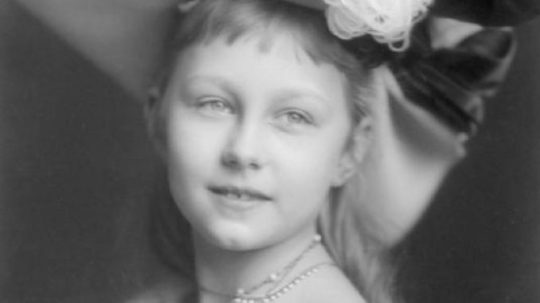
Victoria Louise was assigned an English governess, Miss Topham. As the only girl in the family, she grew up wanting to be like her brothers. Her brothers made her march with a small wooden rifle, and she enjoyed wearing Highland dress as it made her look more like them. She grew up with a love for horses and often went riding with her mother. Her confirmation took place in the Friedenskirche in Potsdam on 18 October 1909.
Her English governess once wrote that the “warlike” Wilhelm “unbends to a considerable extent when in the bosom of his family… [and is] the dominating force of his daughter’s life. His ideas, his opinions on men and things are persistently quoted by her.”
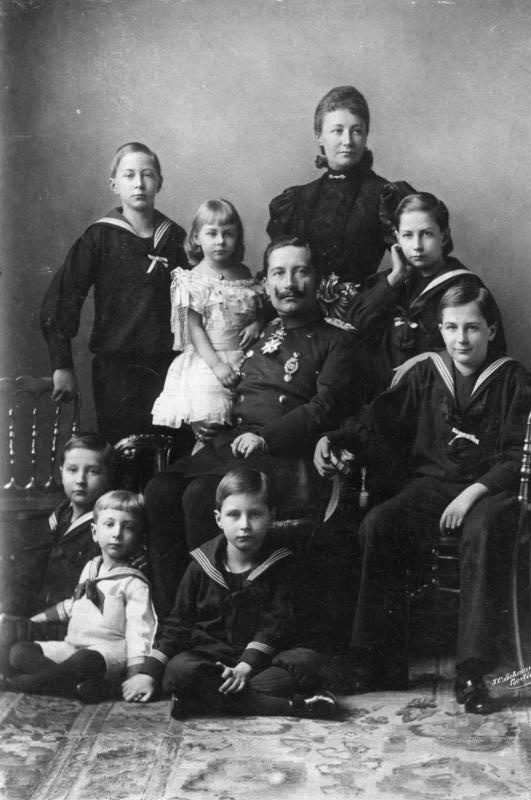
Wilhelm loved his daughter so much that he let her get away with things he would have never allowed his sons to say or do. Her siblings recognized their father’s adoration of their little sister, so much so that the eldest, Crown Prince Wilhelm, once wrote that she was, “the only one of us who succeeded in her childhood in gaining a snug place” in the Kaiser’s heart."
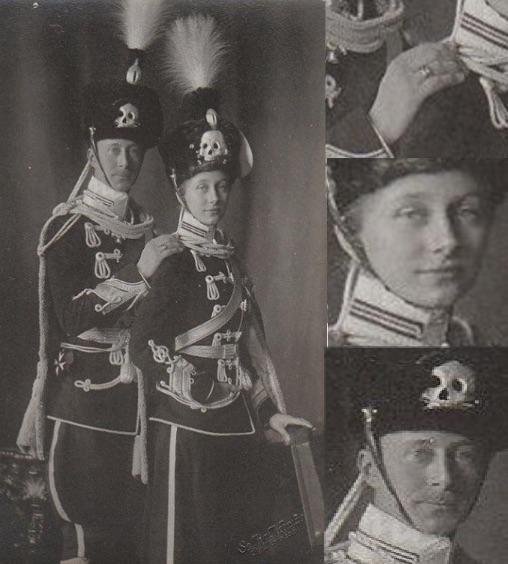
A few days later she was made Colonel-in-Chief of the 2nd Guard Hussar Regiment, of which Victoria Louise was very proud. When she presented her regiment in a march past her father the following year she wrote, “When I lie in bed at night my heart beats with joyful excitement at the thought that in four weeks time I am to lead my regiment past you. I can never thank you enough, and I kiss your hand for bestowing me this great favour. I have always regretted not having been a boy, so as to be able to join your army, but now at least I have been consoled by your gesture.”
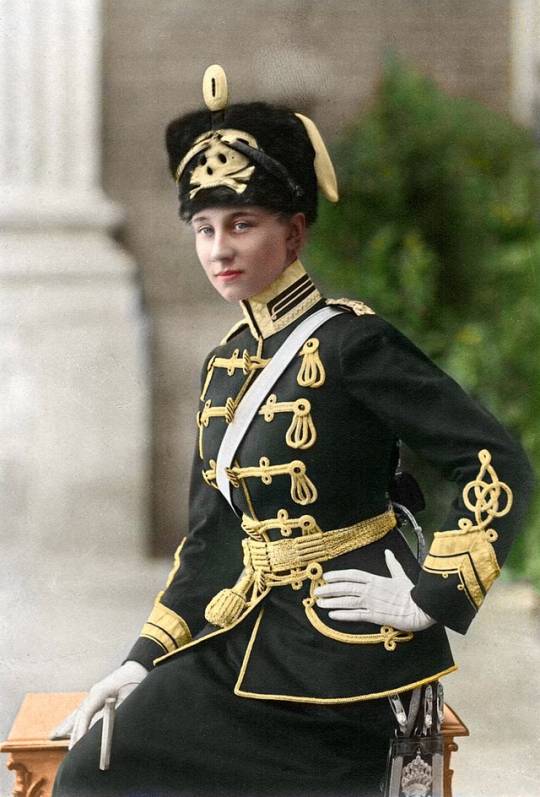
In May 1911, Victoria Louise accompanied her parents on a state visit to the United Kingdom. Immediately there were rumours that she was to be engaged to the Prince of Wales, the future King Edward VIII, who was 17 at the time. She remembered him as nice but also thought he looked terribly young. In any case, the rumours remained rumours. At the beginning of 1912, Victoria Louise became ill with bronchitis and spent several weeks recuperating at St Moritz. While travelling to Bad Homburg to join her mother, news arrived of the death of Prince George Wilhelm of Hanover. He had been on his way to the funeral of King Frederick VIII of Denmark – his uncle – when he was killed in a car accident near Nackel in Mark Brandenburg.
Upon her father’s orders, her brothers Prince Eitel Fritz and Prince August Wilhelm went to the lying-in-state and formed a guard of honour. Shortly after this, Prince George Wilhelm’s younger brother Ernst August came by to personally thank the Emperor.
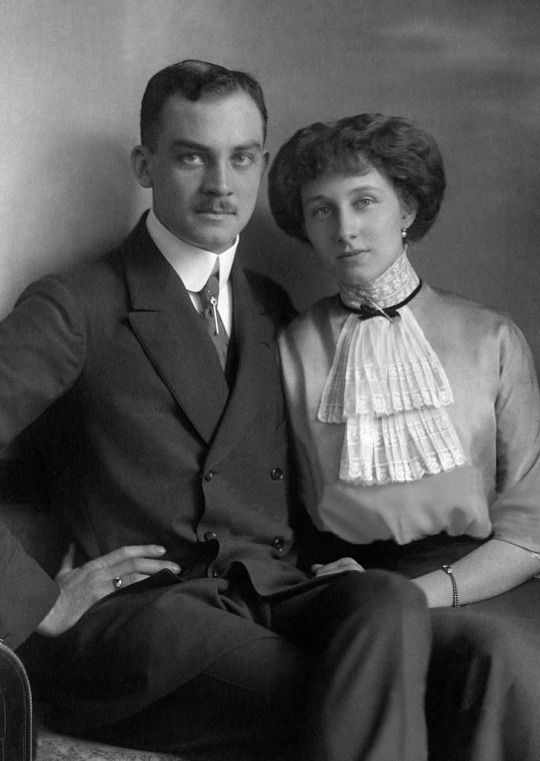
Ernst August was now the heir to the defunct throne of Hanover, from which his family had been deposed by the Prussians. Upon his first meeting with the Emperor and Empress, Victoria Louise found him quite stiff and solemn – he had just lost his brother after all. When the topic came to horses, Victoria Louise offered to show him her thoroughbreds, and the ice seemed to finally have been broken.
She later wrote that she was in love with him at first sight. Her mother wrote, “He certainly made an impression on my child from the first. God knows whether it will ever come to anything.” In the end, the Duke of Cumberland, Ernst August’s father, renounced any claims to the Duchy of Brunswick in favour of his son and Ernst August was to refrain from claiming the Hanoverian throne.
In May 1913, they were to be married, and it would turn out to be the last great gathering of foreign royals before the First World War. On 24 May, Victoria Louise put on a wedding dress and was helped with her bridal crown and a veil by her mother. After the exchanging of the vows, a 36-gun salute was fired. The day ended with a banquet attended by a 1,000 guests. Her father made the toast, “My darling daughter, today, as you leave our house, I want to thank you from the bottom of my heart for all the joy you have given me and your mother, and for the ray of sunshine which you have been in our house.” They spent their honeymoon climbing the mountains and walking in the woods of Gmunden.
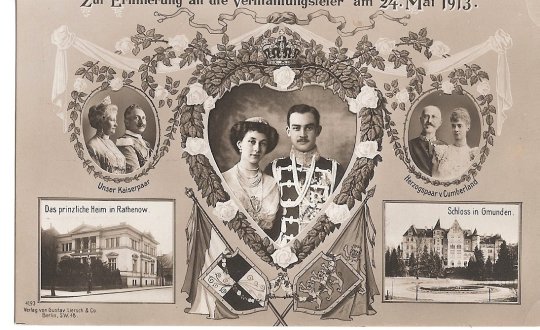
In March 1914, Victoria Louise gave birth to their first child; a son also named Ernst August who had plenty of royal godfathers, such as Emperor Franz Joseph of Austria and the Tsar of Russia.
Just a few months later, Archduke Franz Ferdinand and his wife Sophie were assassinated, kickstarting the First World War. Her husband reported to the army and days followed without any news from him. She began to fill her time with the care of the wounded soldiers. A large block of the castle became a hospital. At Christmas, her husband wrote to her, “Today is Christmas Eve and we three are separated. It is a severe sacrifice, but in these times it is the least we can do. The worse it is just now, the better it will be later. God bless you.” All of Victoria Louise’s brothers were now in the army as well.
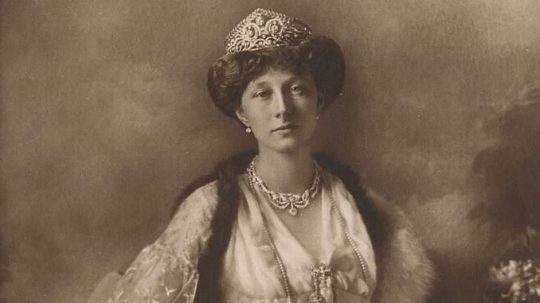
In November 1918, the German Empire came to an end with the abdication of Victoria Louise’s father. He had crossed the border into the Netherlands and had been granted asylum. Brunswick itself was not safe either and as Victoria Louise lay ill with the Spanish flu revolutions rocked the state.
The family – now with the additions of Georg Wilhelm and Frederica – was ordered to leave immediately and together they left for Karlsruhe. Upon arrival, they were promptly arrested. They managed to escape to Bavaria and then on to Austria. They went to live with Ernst August’s parents until they could move into Villa Weinburg. In 1919, she gave birth to their fourth child.

In March 1920, Victoria Louise was at last allowed to visit her parents in their Dutch exile. Along the way, she visited several relatives. Her mother had been terribly ill for quite some time. Her parents were able to buy their own home in the Netherlands, and House Doorn and the few miles around it became their new home. Her mother did not live to enjoy it for very long. As her mother lay dying, they received the news that Victoria Louise’s brother Prince Joachim had killed himself. The Empress died on 11 April 1921, but Victoria Louise was not there.
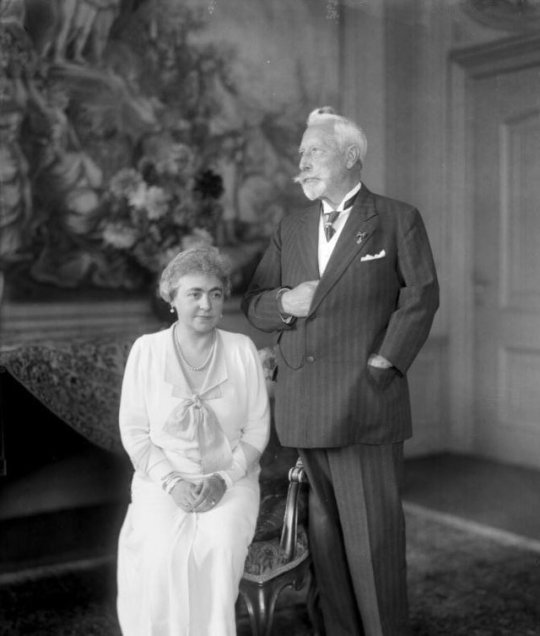
Her father’s decision to remarry not even two years later hurt Victoria Louise. His intended bride was the much younger and widowed Hermine Reuss of Greiz, who had five children by her first husband. Victoria Louise and her brother Oskar wrote a letter to their father, but the wedding went ahead as planned, though several members of the family – including Victoria Louise – were not present. The following year, Victoria Louise gave birth to her fifth and last child, a son named Prince Welf Henry.
It was the Crown Prince who first had contact with Adolf Hitler in 1926. He also sent Hermann Göring to Doorn to meet with the Emperor. Prince August Wilhelm became a member of the Nazi party to his father’s dismay. Victoria Louise met Hitler in 1933 when he invited her and her husband to Berlin. She thought him to be polite and correct and he spoke in a friendly fashion. She would meet him a few more times over the years.
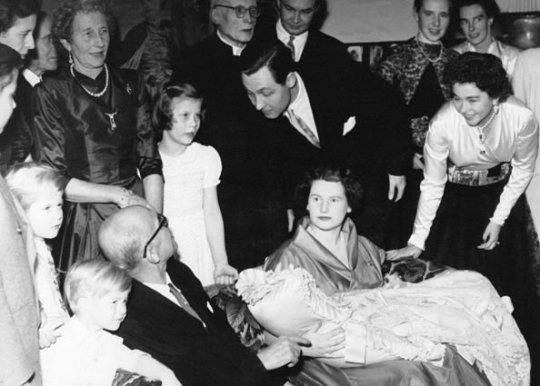
Their children were growing up now, and in 1938, Frederica married the future King Paul of Greece. At the end of the year, Victoria Louise became a grandmother with the birth of Sophia (later Queen of Spain and mother of King Felipe VI of Spain).
The Second World War threw things into turmoil. Victoria Louise’s sons went off to war with their cousins. The invasion of the Netherlands brought her father into an uncomfortable position, and he would welcome the invaders with open arms, smilingly shaking soldiers’ hands. He would die the following year on 4 June 1941 with Victoria Louise by his side.
The end of the Second World War brought the American and British troops to Victoria Louise’s home. Several boxes of the German Foreign Office had been stored at her home, and they mainly showed interest in those. They were confiscated by the Americans, but Victoria Louise and her family were treated well by them. Nevertheless, the family went on the move once more, and they went to Marienburg Castle.
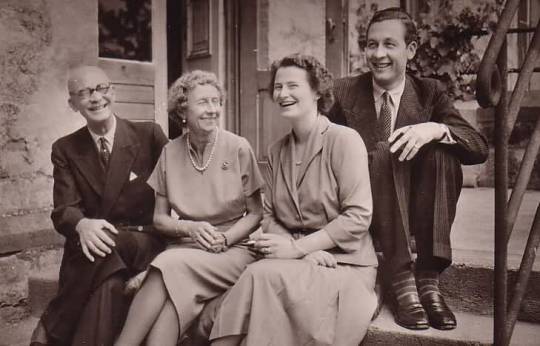
Ernst August suffered from an eye ailment that required an operation. He lost the sight in one eye, and a little while later, he had a severe inflammation of the lungs and never fully recovered. In early 1953, he became weaker and weaker. He told his doctor, “I’ve lived a wonderful life, and I want to go through the remainder courageously.” Victoria Louise was by his side during his final hours. He died on 30 January 1953. Victoria Louise would survive him for almost 30 years.

She returned to Brunswick two years after her husband’s death. She threw herself into charity work and worked for prisoners of war who returned from Russia. She outlived all her siblings and buried her last brother, Prince Oskar in 1958. In her later years, she wrote several books, including her own memoirs.
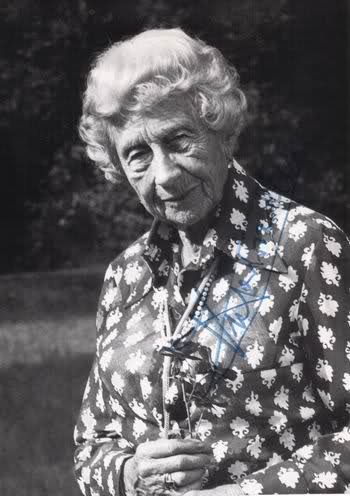
She died on 11 December 1980 at the age of 88 and was buried beside her husband in the Berggarten at Herrenhausen in Hanover. Victoria Louise was the last of Emperor Wilhelm II’s children to die, for her final two surviving brothers, Crown Prince Wilhelm and Prince Oskar had died in 1951 and 1958 respectively.
Victoria Louise lived to see the births of all of her grandchildren. Having seen her daughter Frederica become the Queen of Greece in 1947 when Frederica’s husband, Paul, ascended to the throne as well, she lived to see Frederica became the mother of King Constantine II of Greece and Queen Sofía of Spain.
In many ways her legacy to the present royal houses in Europe is considerable.
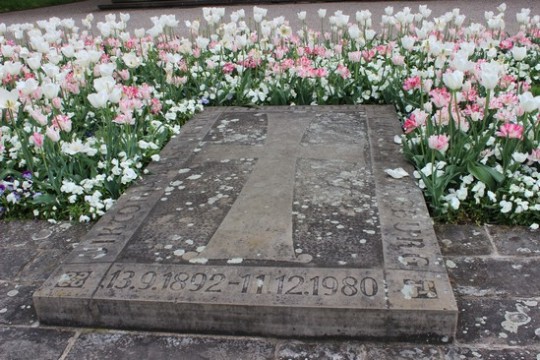
#royalty#germany#history#monarchy#kaiser wilhelm ii#first world war#nobility#military#biography#princess victoria louise of prussia#victoria louise
65 notes
·
View notes
Photo

A sketch for a family portrait of the future Lady Summers that I will make at some point.
Warning: Here there be OC data!
Father: Alexander Friedrich von Hohenzollern (25.12.1815 - 19.03.1870), Margrave of Brandenburg (nominal title)
Mother: Friederike von Welf-Este (27.01.1817 - 18.01.1848), Princess of Hanover, Countess of Calenberg (nominal titles)
Daughter: Luise Friederike Wilhelmine Ernestine Augusta Alexandra Sophie Charlotte von Hohenzollern-Welf-Este, marr. Lady Summers (15.10.1835), Marchioness of Brandenburg, Countess of Calenberg, Countess of Cornwall etc.
17 notes
·
View notes
Photo

Judith of Bavaria, Empress of the Franks (797 - 19 April 843)
#judith of bavaria#empress of the franks#daughter of welf#wife of louis the pious#history#women in history
0 notes
Photo

Henry the Proud (1102-1139)
* Duke of Bavaria 1126-1139
* Duke of Saxony 1137-1139
* Margrave of Tuscany 1137-39
* Duke of Spoleto 1137-39
Son of Henry the Black and one of the most prominent figures of Welf dynasty. In pic above he is portrayed with his wife Gertrud, daughter of Lothair III, Duke of Saxony. The couple was married in 1125 and this arrangement included that House of Welf would back Lothair in German royal elections against a Hohenstaufen candidate Frederick II of Swabia (who was, btw Henry’s brother-in-law)
Lothair was elected and during the following years Henry turned out to be a staunch and competent ally of his father-in-law. He fought alongside Lothair against Hohenstaufens and also accompanied the emperor to Italy on a campaign against Roger II of Sicily. During this Italian war Henry managed to enlarge his realm but this brought him also new enemies both in Italy and Germany.
Emperor Lothair died in December 1137 while returning from Italy and Henry inherited the Duchy of Saxony. According to a contemporary scholar his lands now extended “from sea to sea, from Denmark to Sicily” (Wikipedia). Due to his immense power Henry was seen as a favorite to become a new “King of the Romans” but he was beaten in royal elections by Conrad of Hohenstaufen (brother of Frederick II of Swabia).
After this election Henry the Proud’s status as the most powerful man in German politics.crashed down. There were negotiations between the Hohenstaufen king and the Welf duke but in the end Henry refused to take an oath of allegiance to Conrad and was consequently banned and deprived of his lands in Germany.
Henry tried a military comeback and he actually managed to conquer some parts of Saxony from Alfred the Bear. He died though in 1139 while preparing an attack to Bavaria.
Image: Historia welforum (12th century)
Source: Unknown author [Public domain], via Wikimedia Commons
7 notes
·
View notes
Photo

People of Germany: Frederick Barbarossa (middle), flanked by 2 of his children, King Henry VI (left) and Duke Frederick VI (right). Friedrich I (1122–1190), aka Frederick Barbarossa, was the Holy Roman Emperor from 1155 until his death. He was elected King of Germany in 1152, became King of Italy in 1155, and was crowned Roman Emperor by Pope Adrian IV. Two years later, the term sacrum ("holy") first appeared in a document in connection with his Empire. He was later crowned King of Burgundy (1178), and named Barbarossa (“red beard”, German: Kaiser Rotbart) by the northern Italian cities which he attempted to rule. Before his imperial election, he was by inheritance Duke of Swabia (1147–1152, as Frederick III). He was the son of Duke Frederick II of the Hohenstaufen dynasty and Judith, daughter of Henry IX, Duke of Bavaria, from the rival House of Welf. He therefore descended from the 2 leading families in Germany, making him an acceptable choice for the Empire's prince-electors. Historians consider him among the Holy Roman Empire's greatest emperors as he combined qualities that made him appear almost superhuman to his contemporaries: his longevity, his ambition, his extraordinary skills at organization, his battlefield acumen, and his political perspicuity. Among his contributions to Central European society and culture include the reestablishment of the Corpus Juris Civilis (Roman rule of law), which counterbalanced the papal power that dominated the German states since the conclusion of the Investiture Controversy. He died in 1190 in Asia Minor while leading an army in the Third Crusade. Read more: https://en.wikipedia.org/wiki/Frederick_I,_Holy_Roman_Emperor
#germans#germany#deutschland#history#holy roman emperor#holy roman empire#european neighbors#italy#friedrich I#medieval#middle ages#1100s#1122#1190#people of germany#german royals#aristocracy#crusades#swabia#schwaben#hohenstaufen#welfen#superlatives#art
200 notes
·
View notes
Photo
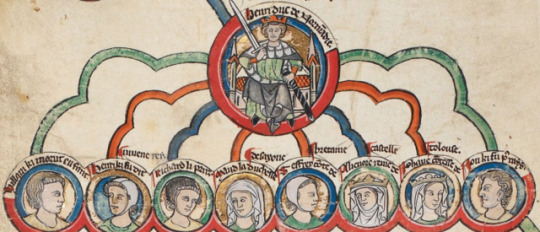
Henri II un anglo franco normardo que comienza una saga que explica las capas tectónicas de la historia de la dominación anglo-germana católica romana en Hispania/ Al- Andalus/ Sefarad. Se ve cómo entre ellos se casan, se matan, se reproducen y se pasan los territorios como pelotas. Guerras y competencias pero siempre entre las familias.
House of Plantagenet
Henry II
(1154–1189) is considered by some to be the first Plantagenet king of England.
Richard of York, 3rd Duke of York, adopted Plantagenet as his family name in the 15th century. Plantegenest (or Plante Genest) had been a 12th-century nickname for his ancestor Geoffrey, Count of Anjou and Duke of Normandy. One of many popular theories suggests the common broom, planta genista in medieval Latin, as the source of the nickname.[1]
Los Angenvins
Angevin kings of England //// Angevin Empire
Angevin is French for "from Anjou". The three Angevin kings were Henry II, Richard I and John. "Angevin" can also refer to the period of history in which they reigned. Many historians identify the Angevins as a distinct English royal house. "Angevin" is also used in reference to any sovereign or government derived from Anjou. As a noun, it refers to any native of Anjou or an Angevin ruler, and specifically to other counts and dukes of Anjou, including the ancestors of the three kings who formed the English royal house; their cousins, who held the crown of Jerusalem; and to unrelated members of the French royal family who were later granted the titles and formed different dynasties, such as the Capetian House of Anjou and the Valois House of Anjou.[4] Consequently, there is disagreement between those who consider Henry III to be the first Plantagenet monarch, and those who do not distinguish between Angevins and Plantagenets and therefore consider the first Plantagenet to be Henry II.[5][6][7][8]
Angevin zenith
Of Henry's siblings, William and Geoffrey died unmarried and childless, but the tempestuous marriage of Henry and Eleanor, who already had two daughters (Marie and Alix) through her first marriage to King Louis, produced eight children in thirteen years:[22]
William IX, Count of Poitiers (1153–1156)
Henry the Young King (1155–1183)
Matilda, Duchess of Saxony (1156–1189)—married Henry the Lion, Duke of Bavaria. The eldest amongst the couple's children, Richenza, is probably the daughter English chroniclers call Matilda, who was left in Normandy with her grandparents in 1185 and married firstly to Geoffrey, count of Perche, and secondly to Enguerrand de Coucy. The eldest son, Henry, became duke of Saxony and count palatine of the Rhine. His brother Otto was nominated by his uncle Richard I as earl of York and count of Poitiers before being elected emperor in opposition to the Hohenstaufen candidate. Otto was crowned in Rome but he was later excommunicated and declared deposed. Childless, Otto lost power following the defeat of the Welf and Angevin forces at the Battle of Bouvines. The youngest child, William of Winchester married Helena daughter of Valdemar I of Denmark. Their only son, also called Otto, was the sole male heir of his uncle Henry. The ducal house of Brunswick-Lüneburg and the British royal house of Windsor both descend from him.[23]
Richard I, King of England (1157–1199). He had no legitimate offspring, but is thought to have had two illegitimate sons, of whom little is known, called Fulk and Phillip, Lord of Cognac.[24]
Geoffrey II, Duke of Brittany (1158–1186)—married Constance daughter of Duke Conan of Brittany and became duke of Brittany by right of his wife. The couple's son Arthur was a competitor to John for the Angevin succession.[25]
Eleanor, Queen of Castile (1161–1214)—married King Alfonso VIII of Castile. The couple's children included King Henry of Castile and four queen consorts, Berengaria, Queen of Leon, Urraca, Queen of Portugal, Blanche, Queen of France and Eleanor, Queen of Aragon.[26]
Joan, Queen of Sicily (1165–1199)—married firstly King William II of Sicily and secondly Count Raymond VI of Toulouse. Her children included Raymond VII of Toulouse.[27]
John, King of England (1166–1216)
La historia se perpetua en varias generaciones y matrimonios que dejan claro que el norte de la peninsula lógicamente por mar se corresponde con Inglaterra y Francia por igual.
Henry III had nine children:[59]
Edward I (1239–1307)
Margaret of England (1240–1275). Her three children predeceased her husband, Alexander III of Scotland; consequently, the crown of Scotland became vacant on the death of their only grandchild, Margaret, Maid of Norway in 1290.[60]
Beatrice, Countess of Richmond (1242–1275). She initially married John de Montfort of Dreux, and later married John II, Duke of Brittany.
Edmund Crouchback (1245–1296), who was granted the titles and estates of Simon de Montfort, 6th Earl of Leicester and the earldom of Leicester after Henry defeated Montfort in the Second Barons' War. Henry later granted Edmund the earldoms of Lancaster and Ferrers. From 1276, through his wife, Edmund was Count of Champagne and Brie.[61] Later Lancastrians would attempt to use Henry IV's maternal descent from Edmund to legitimise his claim to the throne, spuriously claiming that Edmund was the eldest son of Henry III but had not become king due to deformity.[62] Through his second marriage to Blanche, the widow of Henry I of Navarre, Edmund was at the centre of European aristocracy. Blanche's daughter, Joan, was queen regnant of Navarre and queen consort of France through her marriage to Philip IV. Edmund's son Thomas became the most powerful nobleman in England, adding to his inheritance the earldoms of Lincoln and Salisbury through his marriage to the heiress of Henry de Lacy, 3rd Earl of Lincoln.[63]
Four others who died as children: Richard (1247–1256), John (1250–1256), William (c. 1251/1252–1256), Katherine (c. 1252/3–1257) and Henry (no recorded dates).
Henry was bankrupted by his military expenditure and general extravagance. The pope offered Henry's brother Richard the Kingdom of Sicily, but the military cost of displacing the incumbent Emperor Frederick was prohibitive. Matthew Paris wrote that Richard stated: "You might as well say, 'I make you a present of the moon – step up to the sky and take it down'." Instead, Henry purchased the kingdom for his son Edmund, which angered many powerful barons. The barons led by Henry's brother-in-law Simon de Montfort forced him to agree to the Provisions of Oxford, under which his debts were paid in exchange for substantial reforms. In France, with the Treaty of Paris, Henry formally surrendered the territory of his Angevin ancestors to Louis IX of France, receiving in return the title duke of Aquitaine and the territory of Gascony as a vassal of the French king.[43]
Death of Simon de Montfort at the
Battle of Evesham
Disagreements between the barons and the king intensified. The barons, under Simon de Montfort, 6th Earl of Leicester, captured most of southeast England in the Second Barons' War. At the Battle of Lewesin 1264, Henry and Prince Edward were defeated and taken prisoner. De Montfort assembled the Great Parliament, recognized as the first Parliament because it was the first time the cities and boroughs had sent representatives.[64] Edward escaped, raised an army and defeated and killed de Montfort at the Battle of Evesham in 1265.[65] Savage retribution was inflicted upon the rebels, and authority restored to Henry. With the realm now peaceful, Edward left England to join Louis IX on the Ninth Crusade; he was one of the last crusaders. Louis died before Edward's arrival, but Edward decided to continue. The result was disappointing; Edward's small force only enabled him to capture Acre and launch a handful of raids. After surviving an assassination attempt, Edward left for Sicily later in the year, never to participate in a crusade again. When Henry III died, Edward acceded to the throne; the barons swore allegiance to him even though he did not return for two years.[65]
Constitutional change and the reform of feudalism
Edward I married Eleanor of Castile, daughter of King Ferdinand of Castile, a great grandson of Henry II through his second daughter Eleanor in 1254. Edward and Eleanor had sixteen children; five daughters survived to adulthood, but only one son survived Edward:[66]
Eleanor, Countess of Bar (1264/69−1298)
Three daughters (Joan, Alice, and Juliana/Katherine) and two sons (John and Henry) born between 1265 and 1271. They died between 1265 and 1274 with little historical trace.
Joan, Countess of Gloucester (1272–1307)
Alphonso, Earl of Chester (1273–1284)
Margaret, Duchess of Brabant (1275–1333)
Mary of Woodstock (1278–1332), who became a nun
Isabella (1279–1279)
Elizabeth, firstly Countess of Holland and on widowhood, secondly Countess of Hereford (1282–1316). Among her eleven children were the earls of Hereford, Essex, and Northampton, and the countesses of Ormond and Devon.
Edward II
Two other daughters (Beatrice and Blanche), who died as children.
Following Eleanor's death in 1290, Edward married Margaret of France, daughter of Philip III of France, in 1299. Edward and Margaret had two sons, who both lived to adulthood, and a daughter who died as a child:[67]
Thomas (1300–1338), whose daughter Margaret inherited his estates. Margaret's grandson, Thomas Mowbray, was the first duke of Norfolk, but Richard II exiled him and stripped him of his titles.
Edmund, Earl of Kent (1301 to 1330). Edmund's loyalty to his half-brother, Edward II, resulted in his execution by order of the rebel Mortimer and his lover, Edward's queen, Isabella. His daughter, Joan, inherited his estates and married her own cousin, Edward the Black Prince; together, they had Richard, who later became the English king.
Eleanor (1306–1311).
Más adelante .... Fighting in the Hundred Years' War spilled from the French and Plantagenet lands into surrounding realms, including the dynastic conflict in Castile between Peter of Castile and Henry II of Castile. The Black Prince allied himself with Peter, defeating Henry at the Battle of Nájera. Edward and Peter fell out when Peter was unable to reimburse Edward's military expenses leaving him bankrupt.[75] The Plantagenets continued to interfere, and John of Gaunt, 1st Duke of Lancaster, the Black Prince's brother, married Peter's daughter Constance, claiming the Crown of Castile in her name. He invaded with an army of 5000 men. Fighting was inconclusive before Gaunt agreed a treaty with King Juan of Castile.[76] Terms of the treaty included the marriage of John of Gaunt's daughter Katherine to Juan's son, Enrique.[77]
entonces... John of Gaunt (1340–1399), after Blanche's death in 1369, John married Constance of Castile, trying unsuccessfully to obtain the throne of Castile. The marriage produced two children:Catherine of Lancaster (1372–1418)—married Henry III of Castile, with whom she was a great-grandmother of Catherine of Aragon, first wife of Henry VIII of England.John (1374–1375)Constance died in 1394, after which John married Katherine Swynford on 13 January 1396. Their four children were born before they married. The pope legitimised them in 1396, as did Richard II by charter, on the condition that their children could not ascend the throne:John (c. 1371/1372–1410)—grandfather of Margaret Beaufort, Henry VII's mother.Henry (1375–1447)Thomas (1377–1427)Joan (1379–1440)—Joan's son, Richard Neville, 5th Earl of Salisbury, and her grandson, Richard Neville, 16th Earl of Warwick, were leading supporters of the House of York.Edmund (1341–1402)—founder of the House of York. He had three children with Isabella of Castile:Edward (1373–1415)—killed at the Battle of Agincourt.Constance (1374–1416)Richard—(1375–1415)Blanche (1342)—died as a child.Mary of Waltham (1344–1362)—married John V, Duke of Brittany. No issue.Margaret (1346–1361)—married John Hastings, 2nd Earl of Pembroke. No issue.Joan (b. 1351)Thomas (1355–1397)—murdered or executed for treason by order of Richard II; his daughter, Anne, married Edmund Stafford.Edward's long reign had forged a new national identity, reinforced by Middle English beginning to establish itself as the spoken and written language of government. As a result, he is considered by many historians in cultural respects the first 'English' post-conquest ruler.[74]
No paraban jamás! sigue la tradición:
House of York
Edward III made his fourth son Edmund the first duke of York in 1362. Edmund was married to Isabella, a daughter of King Peter of Castile and María de Padilla and the sister of Constance of Castile, who was the second wife of Edmund's brother John of Gaunt. Both of Edmund's sons were killed in 1415.
María de Padilla (c. 1334 [1]–Seville, July 1361) was the mistress of King Peter of Castile.
María Díaz de Padilla
Arms of María de Padilla
Born1334
Died August 1361 (aged 26–27)
Juan García de Padilla 1st Lord of Villagera and María González de Henestrosa
Religion
Roman Catholicism
She was a Castilian noblewoman, daughter of Juan García de Padilla (died between 1348 and 1351) and his wife María González de Henestrosa[2] (died after September 1356). Her maternal uncle was Juan Fernández de Henestrosa, the King's favorite between 1354 and 1359[3] after Juan Alfonso de Alburquerque fell out of favor, and the mediator in an apparent pardon for Fadrique Alfonso, King Peter's half-brother. She was also the sister of Diego García de Padilla, Grand Master of the Order of Calatrava.[3]María’s family, members of the regional nobility,[4] originally came from the area of Padilla de Abajo, near Castrojeriz in the province of Burgos.
She is described in the chronicles of her time as very beautiful, intelligent, and small of body.[5]
Real Monasterio de Santa Clara en Astudillo (Palencia) founded by María de Padilla
Relationship with King Peter of Castile
King Peter met María in the summer of 1352 during an expedition to Asturias to battle his rebellious half-brother Henry. It was probably her maternal uncle, Juan Fernández de Henestrosa, who introduced them, as mentioned in the chronicle of King Peter’s reign written by Pero López de Ayala.[6] At that time, María was being raised at the house of Isabel de Meneses, wife of Juan Alfonso de Alburquerque, a powerful nobleman. They became lovers and their relationship lasted until her death despite the King’s other marriages and affairs. The Padillas were raised to various offices and dignities. Her uncle, Henestrosa, became Alcalde de los fidalgos.[7]
In the summer of 1353, under coercion from family and the main court favorite, Juan Alfonso de Alburquerque, Peter wed Blanche of Bourbon, the first cousin of King John II of France. Peter abandoned Blanche within three days when he learned that she had an affair with his bastard brother Fadrique Alfonso en route to Spain, and that the dowry was not coming.
Children
María and Peter had three daughters: Beatrice (born 1354), Constance (1354–1394), and Isabella (1355–1392), and a son, Alfonso, crown-prince of Castile (1359 - October 19, 1362).
Two of their daughters were married to sons of Edward III, King of England. Isabella married Edmund of Langley, 1st Duke of York, while the elder, Constance, married John of Gaunt, 1st Duke of Lancaster, leading him to claim the crown of Castile on behalf of his wife. Constance's daughter, Catherine of Lancaster, married Henry III of Castile in order to reunify any claim to succession that may have passed via Constance.
El Horror que nos somete:
The Order of Calatrava (Spanish: Orden de Calatrava Portuguese: Ordem de Calatrava) was the first military order founded in Castile, but the second to receive papal approval. The papal bull confirming the Order of Calatrava as a Militia was given by Pope Alexander III on September 26, 1164. Most of the political and military power of the order dissipated by the end of the 15th century, but the last dissolution of the order's property did not occur until 1838.
Origins and foundation
It was founded at Calatrava la Vieja in Castile, in the twelfth century by St. Raymond of Fitero, as a military branch of the Cistercian family.[1][2] The etymology of the name of this military order, Calatrava, conveys the meaning: "fortress of Rabah".
Rodrigo of Toledo describes the origins of the order:
Castle of Calatrava la Nueva, former parent headquarters of the order
"Calatrava is the Arabic name of a castle recovered from the Moslems, in 1147, by the King of Castile, Alfonso VII, called el Emperador. Located in what was then the southernmost border of Castile, this conquest was more difficult to keep than to make, especially at a time with neither standing armies nor garrisons were known. In part to correct this deficiency, the military orders such as Knights Templars were founded, where men could fulfill a vow of perpetual war against the Muslim. The Templars, however, were unable to hold Calatrava, and the king found further volunteer warriors when Raymond, Abbot of the Cistercian monastery of Fitero offered himself.
Los sueños de Re-conquista.. pero cual de ellas? sino la Romana por alusión y conexiones subterráneas?
Battles during the Reconquista
The first military services of the Knights of Calatrava were highly successful, and in return for the exceptional services they had rendered they received from the King of Castile new grants of land, which formed their first commanderies. They had already been called into the neighbouring Kingdom of Aragon, and been rewarded by a new encomienda (landed estate), that of Alcañiz (1179). But these successes were followed by a series of misfortunes, due in the first instance to the unfortunate partition which Alfonso had made of his possessions, and the consequent rivalry which ensued between the Castilian and Leonese branches of his dynasty. On the other hand, the first successes of the Reconquista in the 12th century, soon met up with a new wave of Islamic warriors, the invasion of the Almohads from Morocco. The first encounter resulted in a defeat for Castile.
Battle of Alarcos
After the disastrous Battle of Alarcos, the knights abandoned their bulwark of Calatrava to the Almohads (1195). Velasquez lived long enough to witness the failure of his daring scheme. He died the next year in the monastery of Gumiel (1196).[3] The order in Castile appeared to be finished, and the branch of Aragon sought primacy. The Knights of Alcañiz actually proceeded to elect a new grand master, but the grand master still living in Castile claimed his right. Finally, by a compromise, the master of Alcañiz was recognized as second in dignity, with the title of Grand Commander for Aragon.
The scattered remains of Castilian knights sheltered in the Cistercian monastery of Cirvelos, and there began to regroup and expand. They soon erected a new bulwark, Salvatierra Castle, where they took the name, which they kept for fourteen years, of Knights of Salvatierra (1198). But Salvatierra itself fell to the Almohad Caliphate in 1209.
Summoned by Pope Innocent III, foreign crusaders joined Iberian Christians. An early battle was the reconquest of Calatrava (1212), which was returned to its former masters. In the same year the battle of Las Navas de Tolosa turned the tide of Muslim domination in Spain. Having recovered its stronghold, and resumed the title of Calatrava (1216), the order nevertheless removed to more secure quarters of Calatrava la Nueva, eight miles from old Calatrava (1218). In 1221 the Order of Monfragüe was merged into that of Calatrava.
With the decline of Muslim power, new orders sprang up, including the Alcántara in the Kingdom of León and Avis in Portugal. Both began under Calatrava's protection and the visitation of its grand master. This age marks the climax of Iberian chivalry: it was then that King Ferdinand the Saint, after the definitive coalition of Castile and León (1229), in (1235) captured the capital of the old caliphate, Cordova, soon afterwards Murcia, Jaén, and Seville. The European crusade seemed at an end. Encouraged by these victories, Ferdinand's successor, Alfonso X, the Wise, planned a crusade in the East and contemplated marching, with his Castilian chivalry, to restore the Latin Kingdom of Jerusalem (1272).
Calatrava had developed abundant resources of men and wealth, with lands and castles scattered along the borders of Castile. It exercised feudal lordship over thousands of peasants and vassals. Thus, more than once, we see the order bringing to the field, as its individual contributions, 1200 to 2000 knights, a considerable force in the Middle Ages. Moreover, it enjoyed autonomy, being by its constitutions independent in temporal matters and acknowledging only spiritual superiors—the Abbot of Morimond and, in appeal, the pope. These authorities interfered, in consequence of a schism which first broke out in 1296 through the simultaneous election of two grand masters, García Lopez and Gautier Perez.
Lopez, dispossessed a first time by a delegate of Morimond, appealed to Pope Boniface VIII, who quashed the sentence and referred the case to the general chapter at Cîteaux, where Lopez was re-established in his dignity (1302). Dispossessed a second time, in consequence of a quarrel with his lieutenant, Juan Nuñez, Lopez voluntarily resigned in favour of Nuñez, who had taken his place (1328), on condition that he should keep the commandery of Zurita; as this condition was violated, Lopez again, for the third time, took the title of Grand Master in Aragon, where he died in 1336. These facts sufficiently prove that after the fourteenth century the rigorous discipline and fervent observance of the order's earlier times had, under the relaxing influence of prosperity, given place to a spirit of intrigue and ambition.
Peter of Castile entered into a conflict with the order. That prince had three grand masters in succession sentenced to death, as having incurred his suspicion: the first of these was beheaded (1355) on a charge of having entered into a league with the King of Aragon; the second, Estevañez, having competed for the grand mastership with the king's candidate, García de Padilla, was murdered in the royal palace, by the king's own treacherous hand; lastly García de Padilla himself, a brother of the royal mistress, fell into disgrace, upon deserting the king's party for that of his half brother, Henry the Bastard, and died in prison (1369).
The following is an incomplete list of former Grand Masters of the Order of Calatrava, the current grand master of the order is King Felipe VI of Spain
Don García (1164–1169)
Fernando Icaza (1169–1170)
Martín Pérez de Siones (1170–1182)
Nuño Pérez de Quiñones (1182–1199)
Martín Martínez (1199–1207)
Ruy Díaz de Yanguas (1207–1212)
Rodrigo Garcés (1212–1216)
Martín Fernández de Quintana (1216–1218)
Gonzalo Yáñez de Novoa (1218–1238)
Martín Ruiz de Cevallos (1238–1240)
Gómez Manrique (1240–1243)
Fernando Ordóñez (1243–1254)
Pedro Yáñez (1254–1267)
Juan González (1267–1284)
Ruy Pérez Ponce de León (1284–1295)
Diego López de Santsoles (1295–1296)
Garci López de Padilla (1296–1322)
Juan Núñez de Prado (1322–1355)
Diego García de Padilla (1355–1365)
Martín López de Córdoba (1365–1371)
Pedro Muñiz de Godoy y Sandoval (1371–1384)
Pedro Álvarez de Pereira (1384–1385)
Gonzalo Núñez de Guzmán (1385–1404)
Enrique de Villena (1404–1407)
Luis González de Guzmán (1407–1443)
Fernando de Padilla (a few months in 1443)
Alfonso de Aragón y de Escobar (end of 1443–1445)
Pedro Girón Acuña Pacheco (1445–1466)
Rodrigo Téllez Girón (1466–1482)
García López de Padilla (1482–1487)
Catholic Monarchs (from 1487 onwards)
King Juan Carlos I of Spain
King Felipe VI of Spain (Incumbent)
sigue con Isabella de Castilla una saga de la que pocos hablan para descifrar los poderes que llevamos soportando años y siglos:
Isabella was the youngest of the three daughters of King Peter of Castile by his favourite mistress, María de Padilla (d.1361).[1]
On 21 September 1371 Edward III's fourth son, John of Gaunt, 1st Duke of Lancaster, married Isabella's elder sister, Constance (d. 1394), who after the death of their father in 1369 claimed the throne of Castile. Isabella accompanied her sister to England, and on 11 July 1372, at about the age of 17, married John of Gaunt's younger brother, Edmund of Langley, 1st Duke of York, fifth son of King Edward III and Philippa of Hainault, at Wallingford, Oxfordshire, as part of a dynastic alliance in furtherance of the Plantagenet claim to the crown of Castile.[2] According to Pugh, Isabella and Edmund of Langley were 'an ill-matched pair'.[3]
As a result of her indiscretions, including an affair with King Richard II's half-brother, John Holland, 1st Duke of Exeter (d. 1400), whom Pugh terms 'violent and lawless', Isabella left behind a tarnished reputation, her loose morals being noted by the chronicler Thomas Walsingham. According to Pugh, the possibility that Holland was the father of Isabella's favourite son, Richard of Conisburgh, 3rd Earl of Cambridge, 'cannot be ignored'.[4]
In her will Isabel named King Richard as her heir, requesting him to grant her younger son, Richard, an annuity of 500 marks. The King complied. However, further largesse which might have been expected when Richard came of age was not to be, as King Richard II was deposed in 1399, and according to Harriss, Isabella's younger son, Richard, 'received no favours from the new King, Henry IV'.[5]
Isabella died 23 December 1392, aged about 37, and was buried 14 January 1393 at the church of the Dominicans at Kings Langley.[6] After Isabella's death, Edmund of Langley married Joan Holland, sister and co-heir of Edmund Holland, 4th Earl of Kent (9 January 1382 – 15 September 1408), with whom his daughter, Constance, had lived as his mistress (see above).[7]
Isabella was appointed a Lady of the Garter in 1379.[8]
Prodecencia: The Castilian House of Burgundy[1] is a cadet brach of the House of Ivrea descended from Raymond of Burgundy. Raymond married Urraca of the House of Himénez. Two years after his death, Urraca succeeded her father and became queen of Castille and Leon; Urraca's and Raymond's offspring ruled the kingdom from 1126 up to Peter of Castile, 1369.
Origins
Raymond was the fourth son of William I, Count of Burgundy (from the House of Ivrea) and arrived in the Iberian peninsula probably in 1086 with the army of Odo I, Duke of Burgundy, who siege the city Tudela, Navarre. In April 1087 the army abandoned the siege and returned home, but Odo, Raymond and Henry (Raymond's cousin) went west at the court of Alfonso VI king of Castile and León. There, Odo arranged the marriage of king's first daughter Urraca to Raymond on 1087; the couple received the county of Galicia as dowry.[2]In 1093 Alfonso VI married his second daughter Teresa to Henry and gave them the county of Portugal, which evolved to a kingdom.[3] In 1107 Raymond died; the next year died Sancho, king's only son and in 1109 the king himself. Urraca succeeded him up to her death and then next ruler was her son Alfonso VII, first king of Castile and León from the Castilian House of Ivrea:
The founder of the family's fortunes was a petty Burgundian count named Anscar, who, with the support of his powerful brother, the archbishop of Rheims Fulk the Venerable, brought Guy III of Spoleto to Langres to be crowned King of France in 887. Their plot failing, Anscar accompanied Guy back to Italy to seek that vacant throne and, in gratefulness to Anscar, Guy created the March of Ivrea to bestow on his Burgundian faithful. Anscar's descendants held the march until 1030. Perhaps the most illustrious scion of the house was his grandson Berengar, the first of three Anscarids to be crowned king of Italy.Berengar seized the throne in 950 after the death of Lothair II. He was opposed, immediately, by Lothair's widow Adelaide, whom he imprisoned after his attempt to force her marriage to his son, Adalbert II, failed. Emperor Otto I came down the peninsula and forced him to do homage in 952. For the next eleven years, Berengar and his co-crowned son governed Italy until Otto finally formally deposed them in 963.From 1002 to 1014 Arduin of Italy held the Italian throne in opposition to the German Henry II
Castilian branch of Ivrea
Raymond, fourth son of Count William I of Burgundy, travelled to Castile-León in the late eleventh century and there married Urraca, the future monarch. She was succeeded by their son, Alfonso VII. Subsequent monarchs of Castile and León were their agnatic descendants until the 16th century, although the crown had passed to an illegitimate cadet branch, the House of Trastámara, in the late 14th century.
Country
Holy Roman Empire
Kingdom of Italy
Frankish Empire
Papal States
County of Burgundy
Galicia
Castile
and
León
Ethnicity
Frankish
–
Burgundian
Founded9th century
Founder
Anscar I
Final rulerItaly:
Arduin
Burgundy:
Joan II
Castile, Galicia and León:
Peter
Orange:
Philibert
Titles
Pope (Elective)
King of Italy
King of Galicia
King of Castile
King of León
Margrave of Ivrea
Count of Burgundy
Count of Mâcon
Holy Roman Empress
Queen of France(Regent)
La hermana Constance of Castile (1354 – 24 March 1394) was claimant of the Castilian throne after the death of her father Peter, King of Castile and León, also known as Peter the Cruel. Her mother was María de Padilla, whom Peter had secretly married, but was then forced to repudiate; however he kept her as his mistress.Constance of CastileDuchess of LancasterBorn1354Castrojeriz, CastileDied24 March 1394 (aged 39–40)Leicester Castle, LeicestershireBurialChurch of the Annunciation of Our Lady of the Newarke, LeicesterSpouseJohn of Gaunt, 1st Duke of LancasterIssueCatherine, Queen of CastileHouseCastilian House of IvreaFatherPeter of CastileMotherMaría de PadillaReligionRoman CatholicismConstance was married, at Roquefort, near Bordeaux, Guienne, on 21 September 1371, to John of Gaunt, 1st Duke of Lancaster, who was the third son of Edward III of Englandand Philippa of Hainault, as his second wife. Constance's younger sister, Infanta Isabella, married Edmund of Langley, 1st Duke of York, the fourth son of King Edward III and Queen Philippa.On 9 February 1372 Constance made a ceremonial entry into London as Queen of Castile, accompanied by Edward, the Black Prince, and an escort of English and Castilian retainers and London dignitaries. Crowds lined the streets to see her as she processed to the Savoy Palace in the Strand where she was ceremonially received by her husband, who had proclaimed himself King of Castile and León on 29 January.[1]The surrender of Santiago de Compostela to John of Gaunt. Constance is the lady on horseback.This was the way for Gaunt to obtain a kingdom of his own (he had been offered Scotland as a youth by the childless David II but nothing came of this), as his nephew Richard II and the descendants of his brother Lionel of Antwerp, 1st Duke of Clarence, stood between him and the Crown of England. John of Gaunt claimed the title of King of Castile jure uxoris, and insisted that English nobles address him as "my lord of Spain", but was unsuccessful in his attempts to obtain the crown. Their daughter Catherine of Lancaster was married to the king of the Trastámara line, Henry III of Castile, thus uniting these two rival claims.Constance died at Leicester Castle and was buried at the Church of the Annunciation of Our Lady of the Newarke, Leicester.[2][3]
y le sigue Berengaria (Castilian: Berenguela; nicknamed the Great (Castilian: la Grande); 1179 or 1180 – 8 November 1246) was queen regnant of Castile[1] in 1217 and queen consort of León from 1197 to 1204. As the eldest child and heir presumptive of Alfonso VIII of Castile, she was a sought after bride, and was engaged to Conrad, the son of Holy Roman Emperor Frederick I Barbarossa. After his death, she married her cousin, Alfonso IX of León, to secure the peace between him and her father. She had five children with him before their marriage was voided by Pope Innocent III.Berengaria1753 statue in MadridQueen of Castile and ToledoReign6 June – 31 August 1217PredecessorHenry ISuccessorFerdinand IIIQueen consort of LeónTenure1197–1204Born1179 or 1180BurgosDied8 November 1246 (aged 66)Las Huelgas near BurgosBurialLas Huelgas near BurgosConsortConrad II, Duke of Swabia(m. 1187; died 1196)Alfonso IX of León(m. 1197; annulled 1204)Issuemore...Ferdinand III of CastileAlfonso, Lord of MolinaBerengaria, Latin EmpressHouseCastilian House of IvreaFatherAlfonso VIII of CastileMotherEleanor of EnglandReligionRoman CatholicismWhen her father died, she served as regent for her younger brother Henry I in Castile until she succeeded him on his untimely death. Within months, she turned Castile over to her son, Ferdinand III, concerned that as a woman she would not be able to lead Castile's forces. However, she remained one of his closest advisors, guiding policy, negotiating, and ruling on his behalf for the rest of her life. She was responsible for the re-unification of Castile and León under her son's authority, and supported his efforts in the Reconquista. She was a patron of religious institutions and supported the writing of a history of the two countries.
2 notes
·
View notes
Photo

Princess Elizabeth Juliane of Schleswig-Holstein-Sønderburg-Nordborg (24 May 1634 – 4 February 1704) was a Danish princess and a member of the House of Schleswig-Holstein-Sonderburg-Norburg by birth and a member of the House of Welf by marriage.
Elizabeth Juliane was born in Nordborg as the oldest daughter of Frederick, Duke of Schleswig-Holstein-Sønderburg-Norburg, the sovereign duke of Schleswig-Holstein-Sonderburg-Norburg and his second wife Eleanor of Anhalt-Zerbst. Her paternal grandparents were John II, Duke of Schleswig-Holstein-Sonderburg and Duchess Elisabeth of Brunswick-Grubenhagen. Her maternal grandparents were Rudolph, Prince of Anhalt-Zerbst (1576–1621) and Princess Dorothea Hedwig (1587–1609).
Together with her husband, she founded a monastery for noblewomen at Schloss Salzdahlum in 1699, and then selected the monastery's first conventual women herself.
Elisabeth Juliane died at Salzdahlum on 4 February 1704 and was buried in was buried in the crypt of the Wolfenbüttel in Marienkirche, Wolfenbüttel.
#Elizabeth Juliane of Schleswig-Holstein-Sønderburg-Nordborg#House Oldenborg#XVII century#XVIII century#people#portrait#paintings#art#arte
0 notes